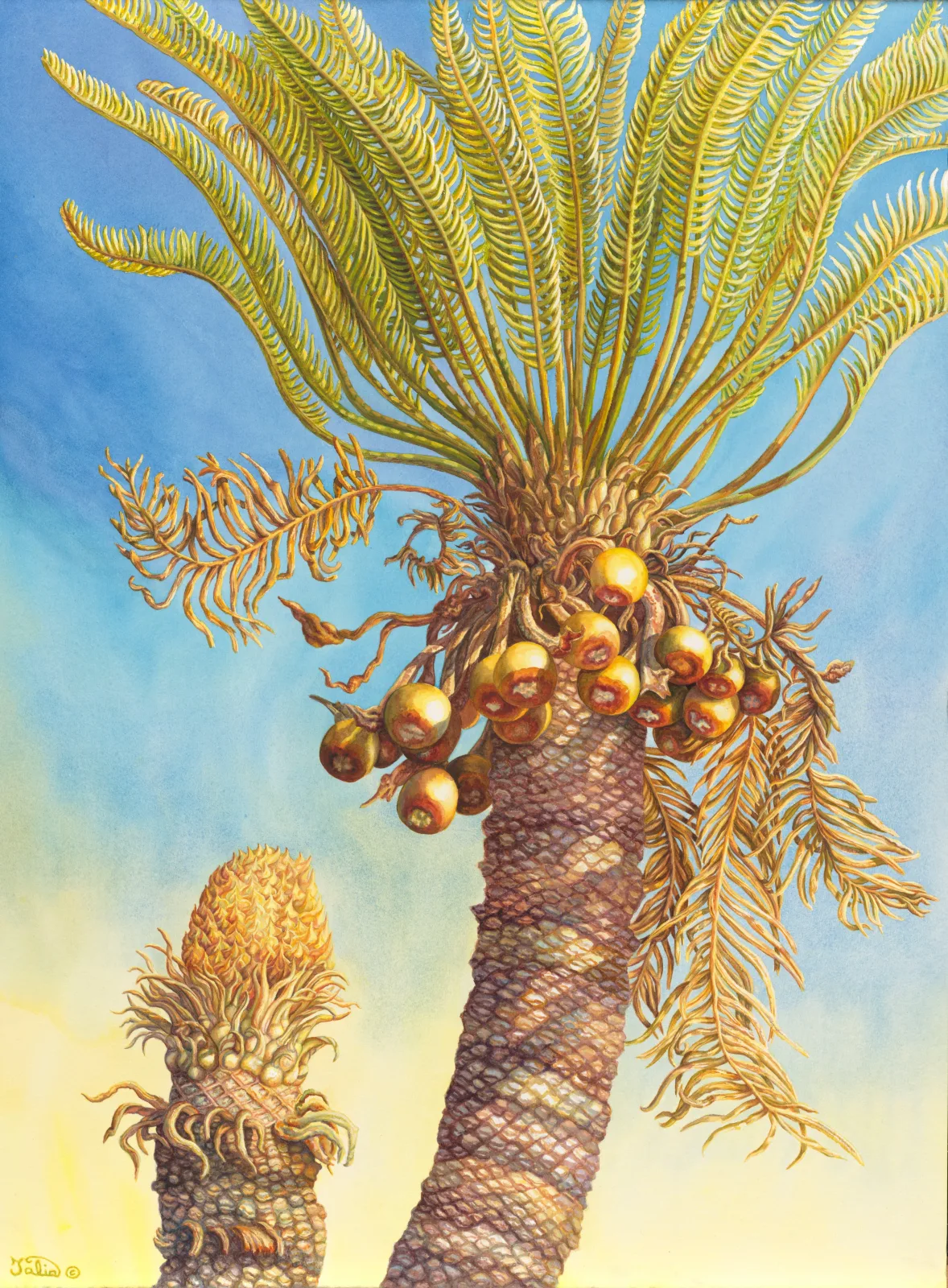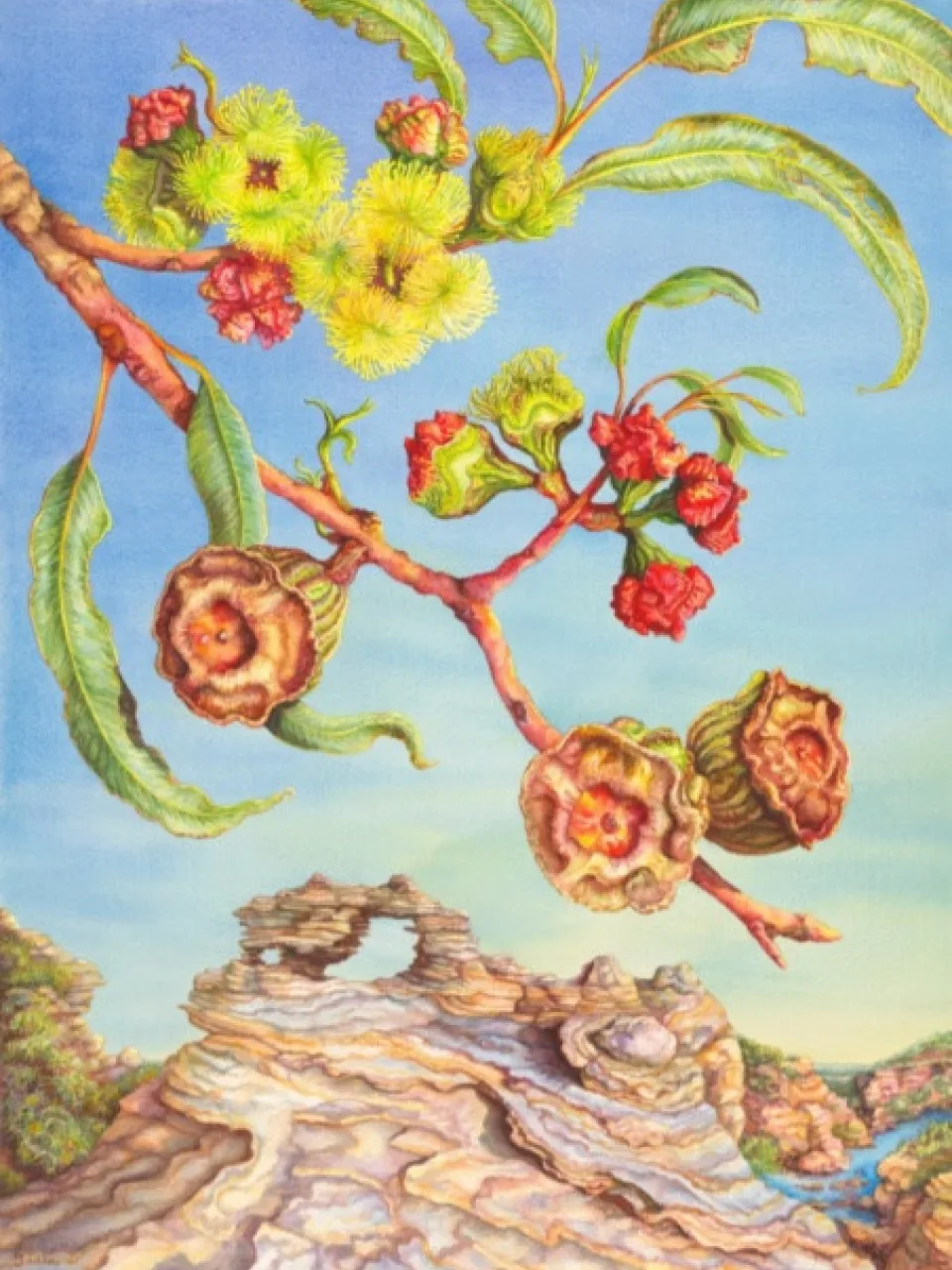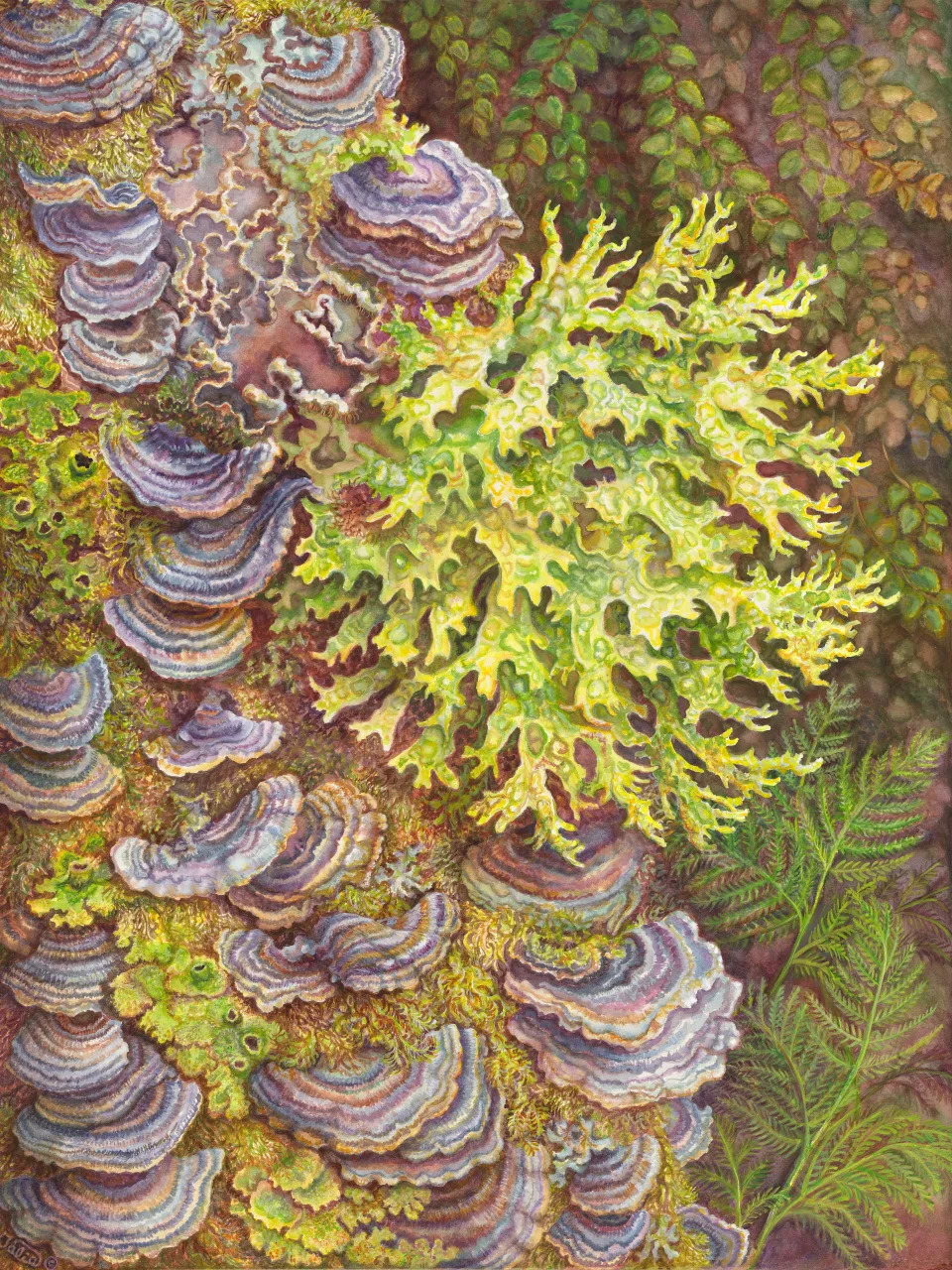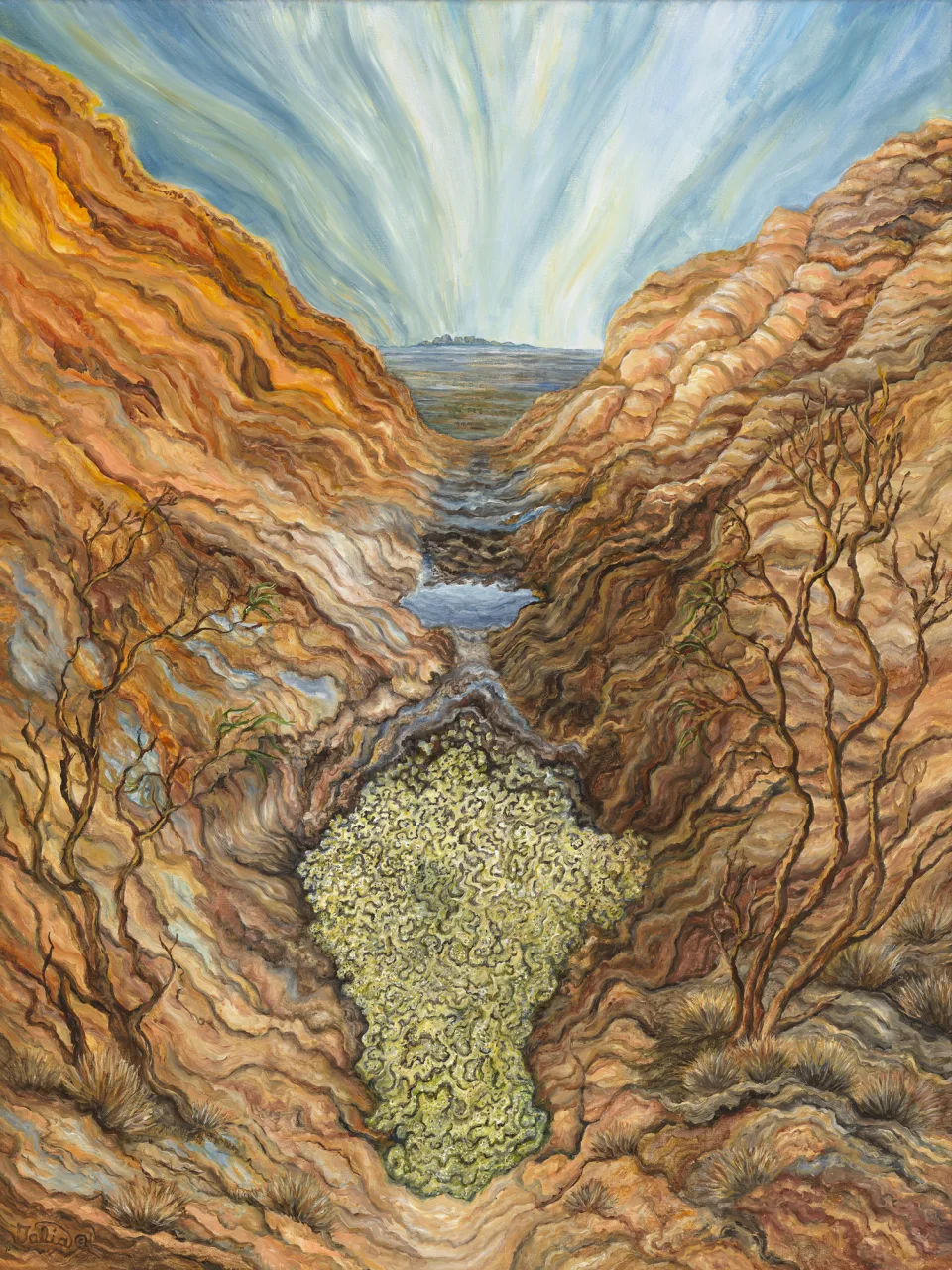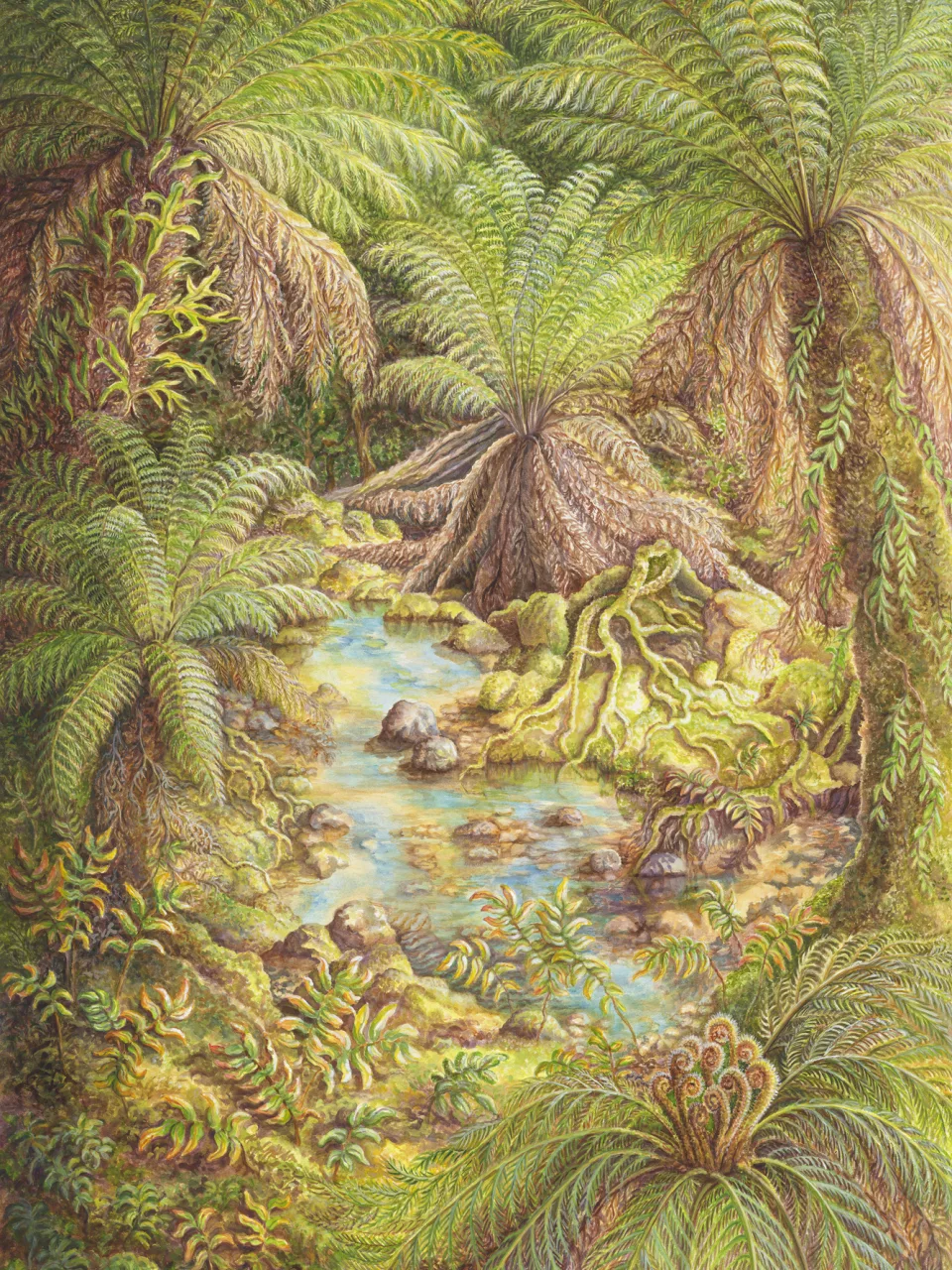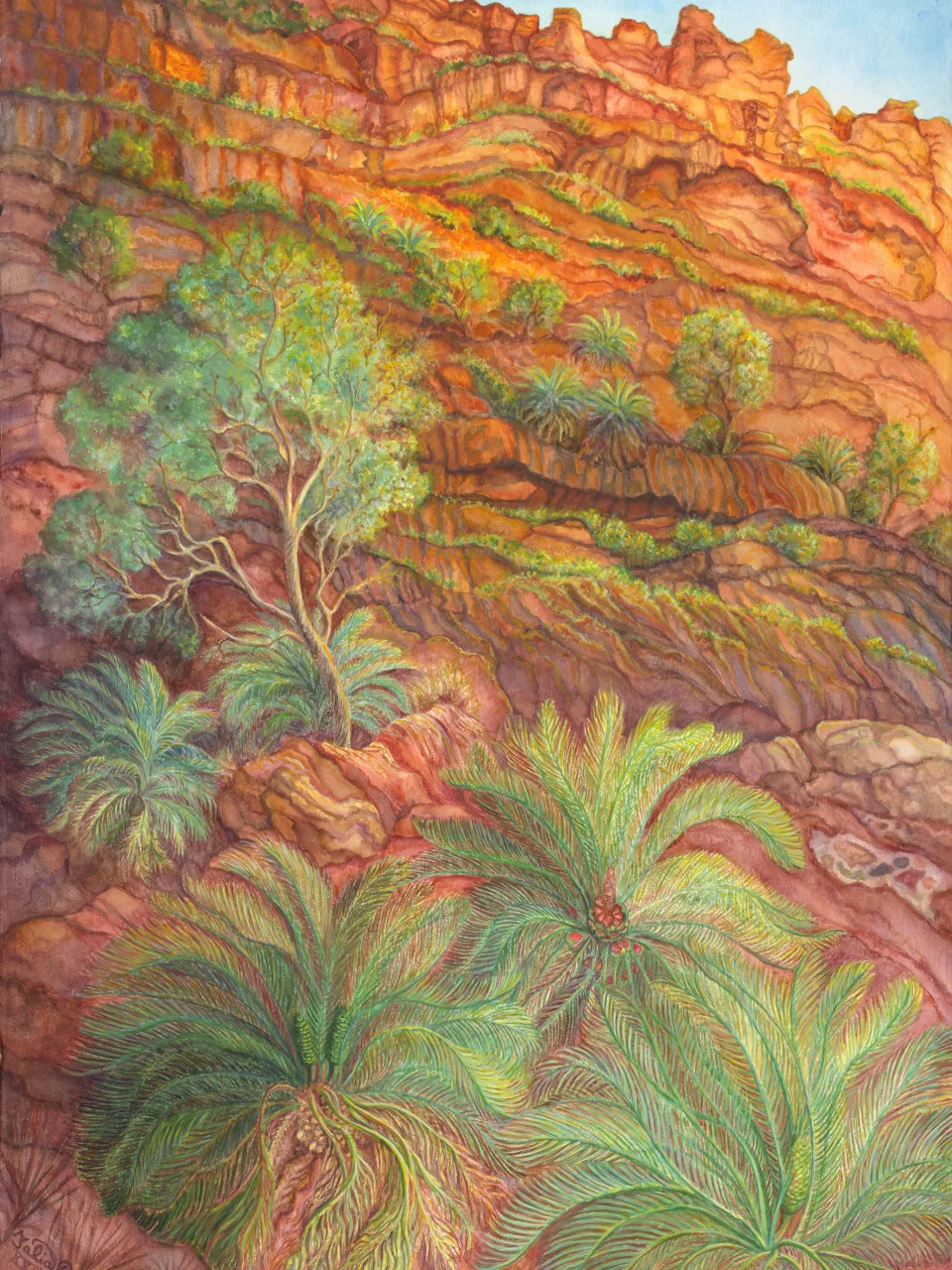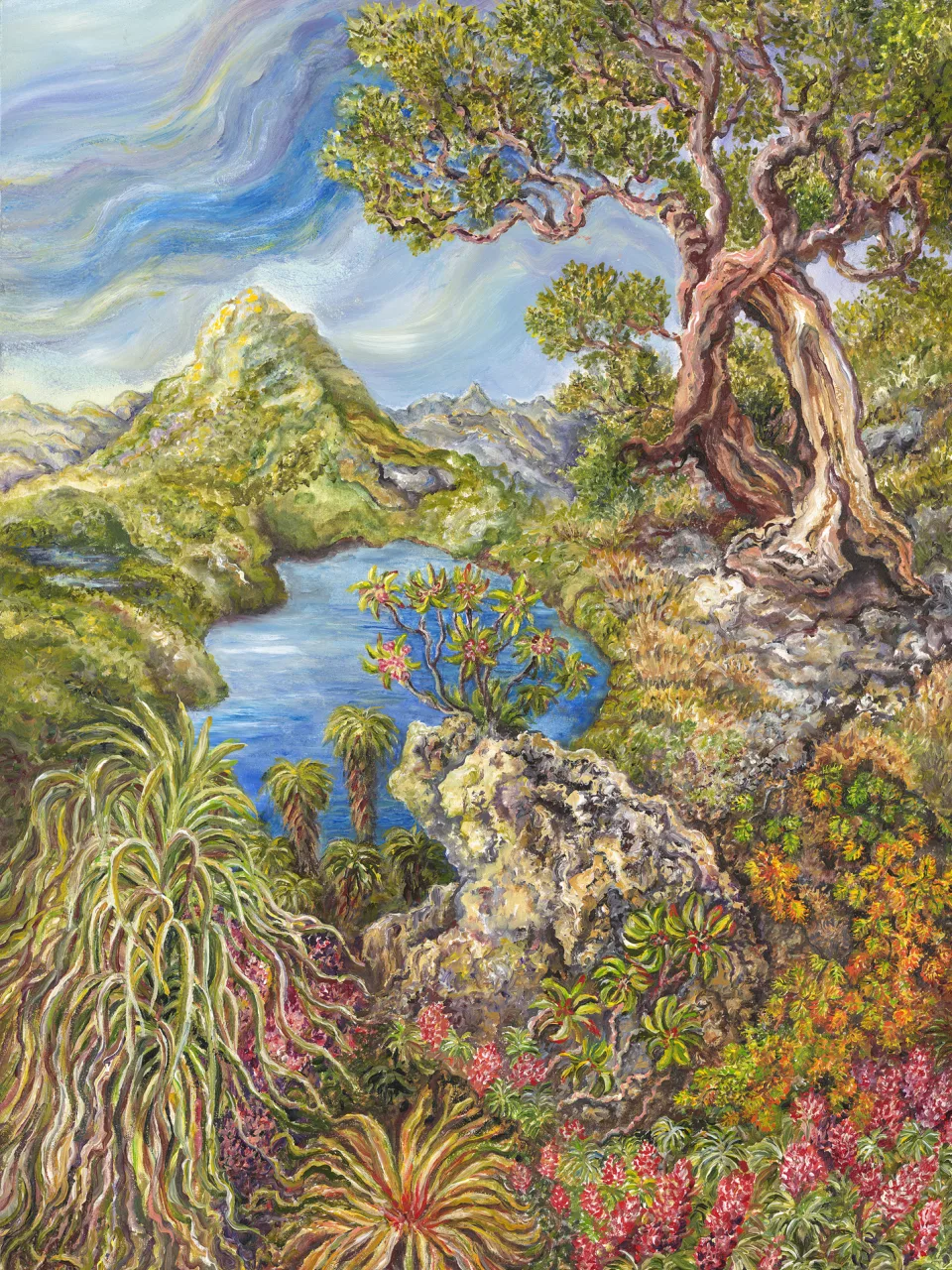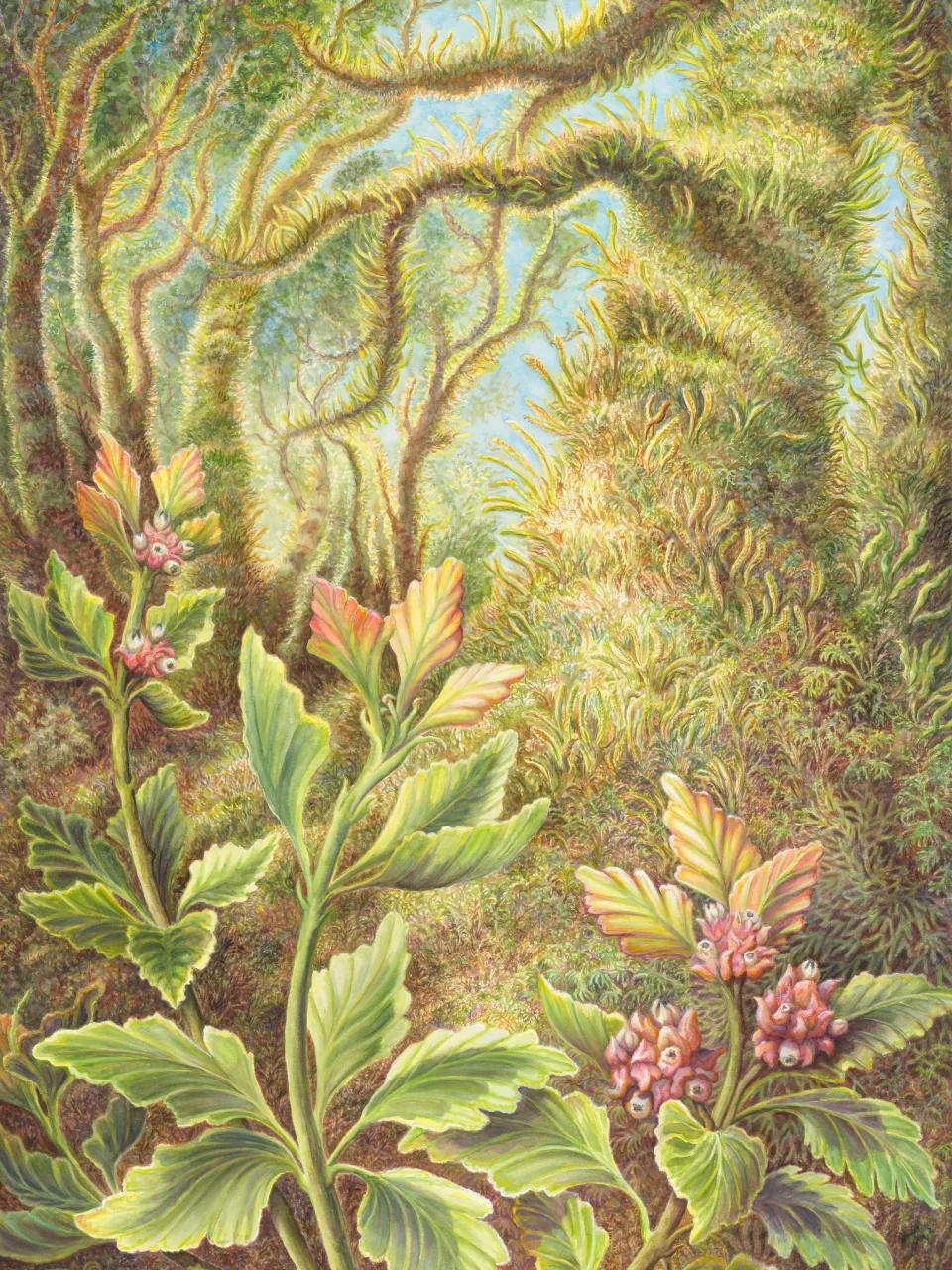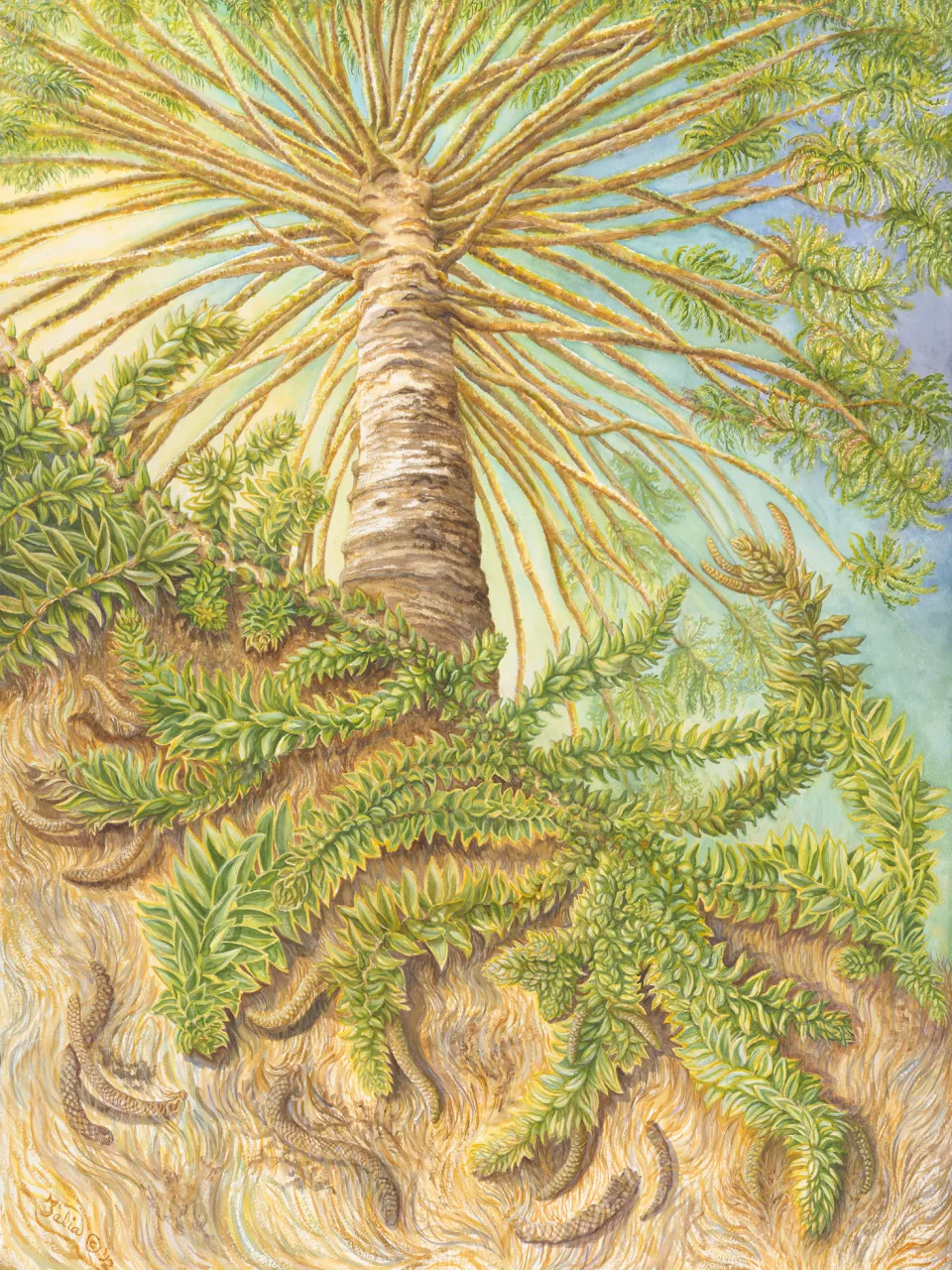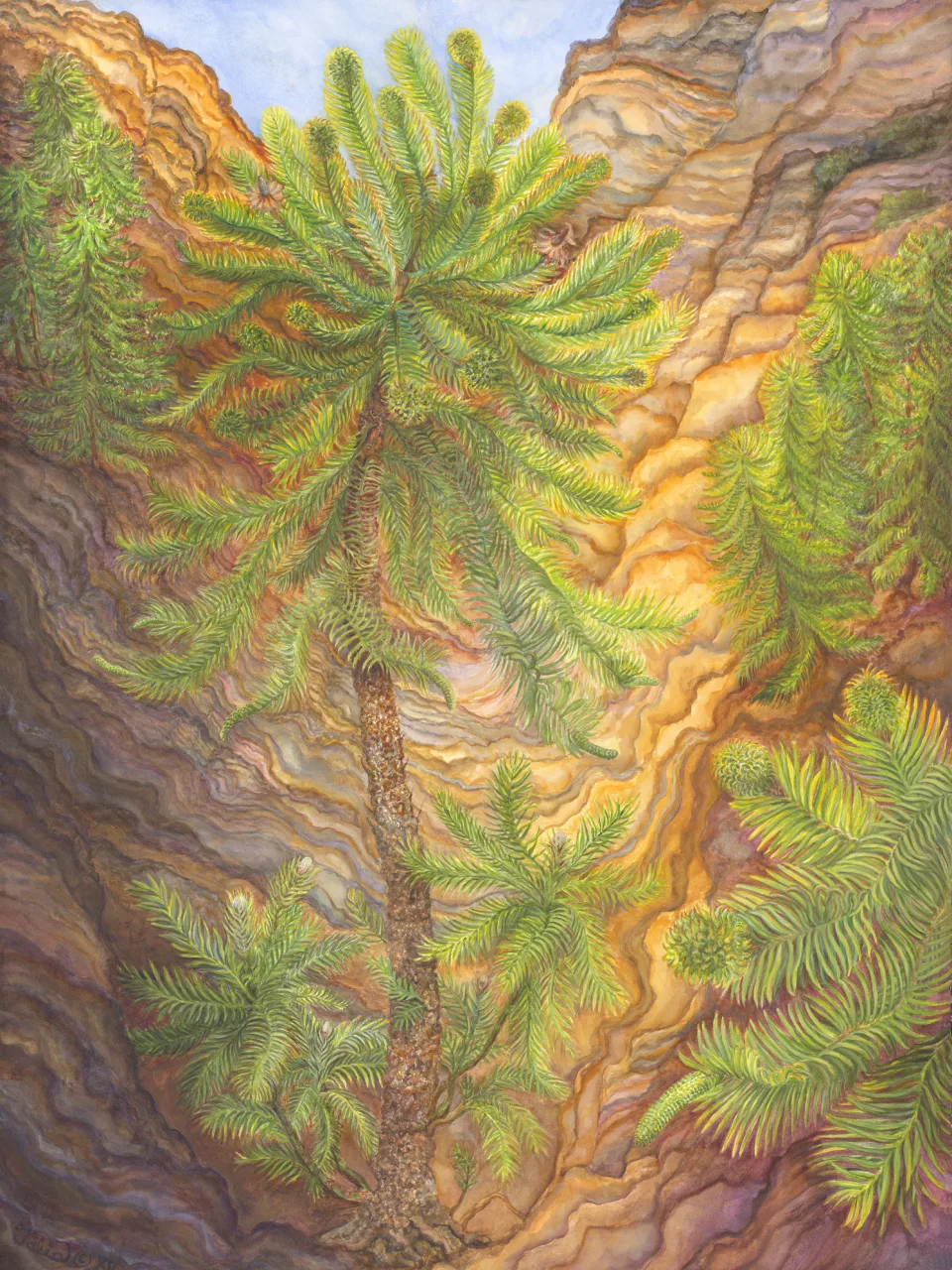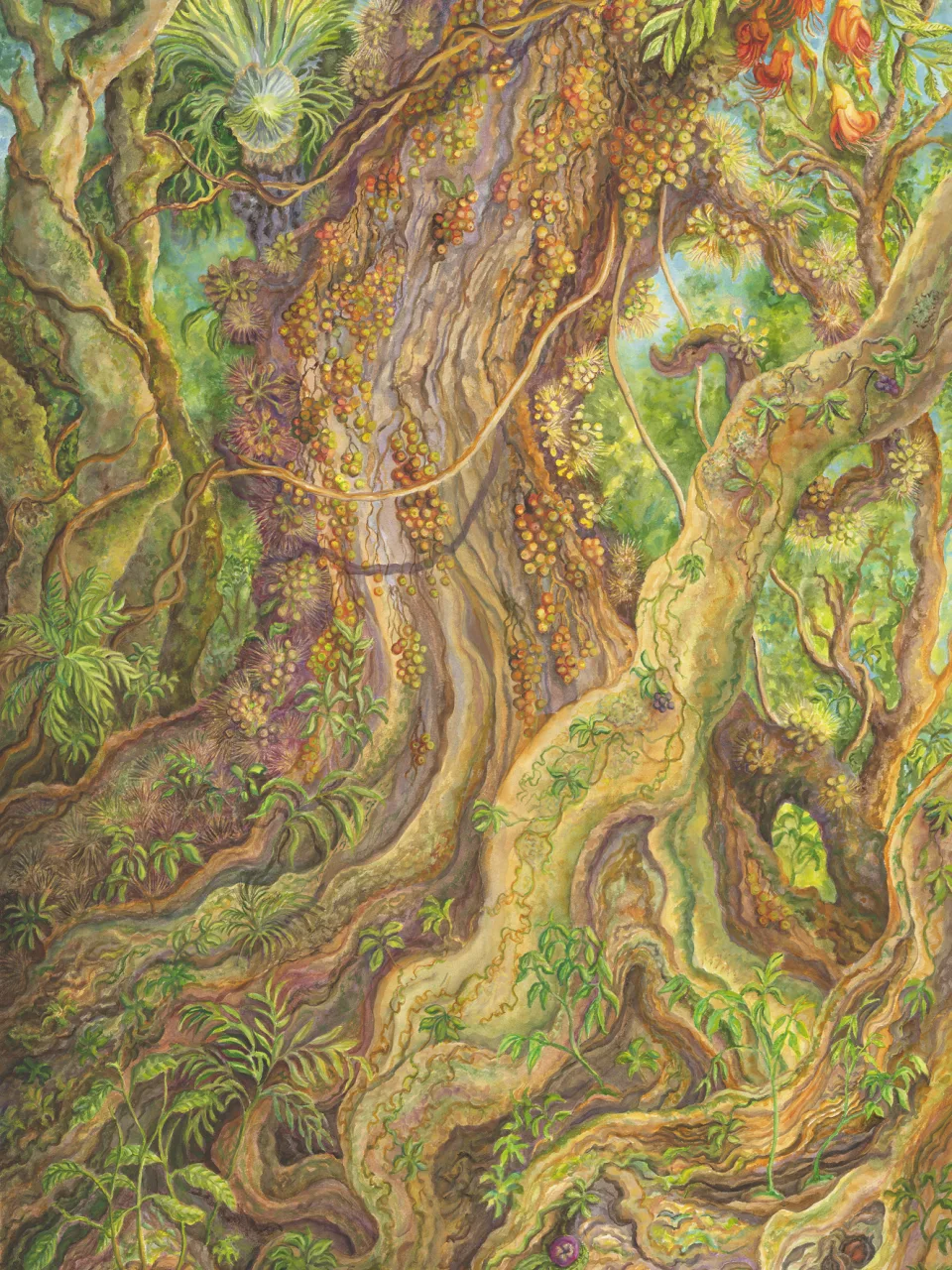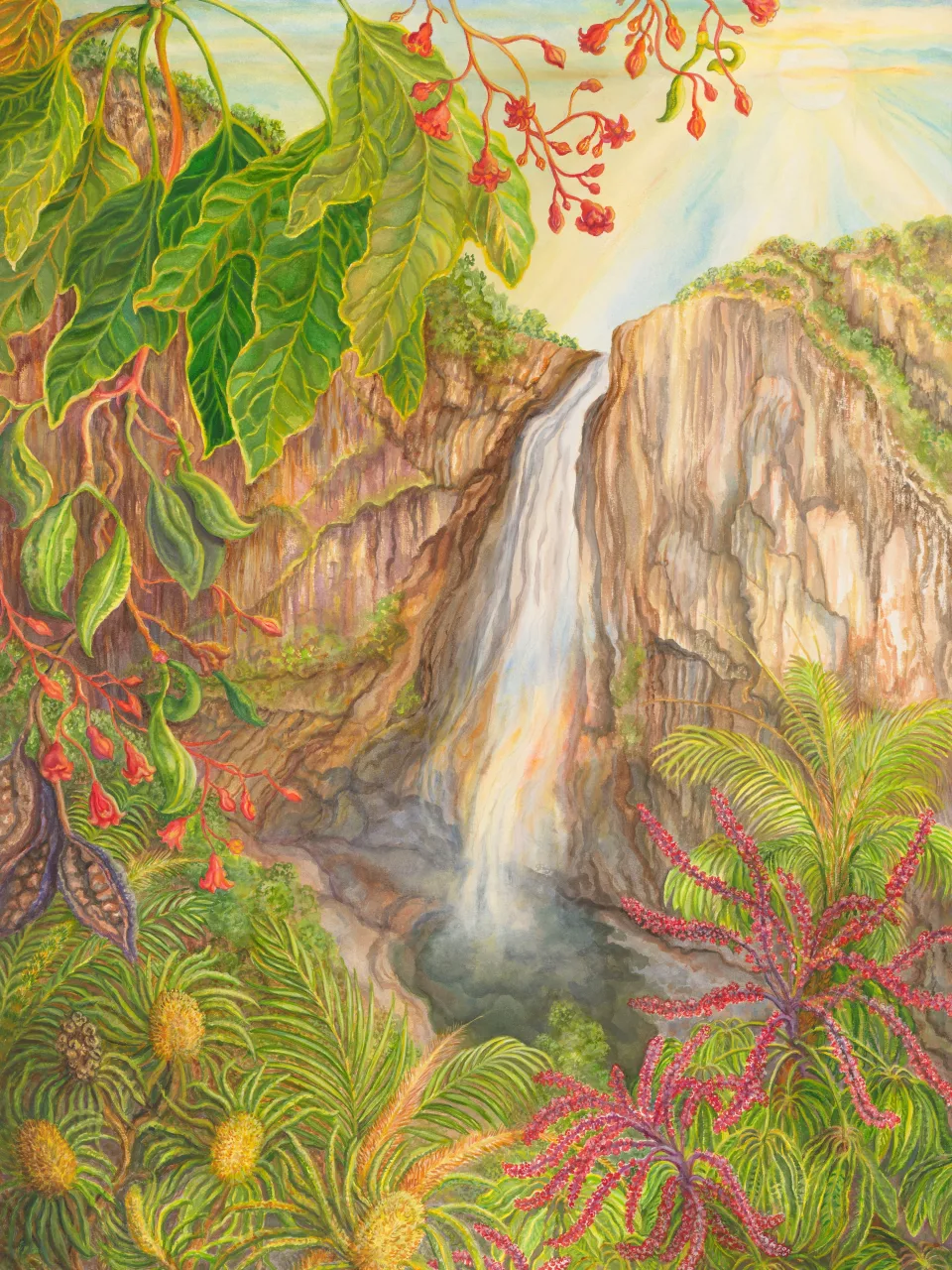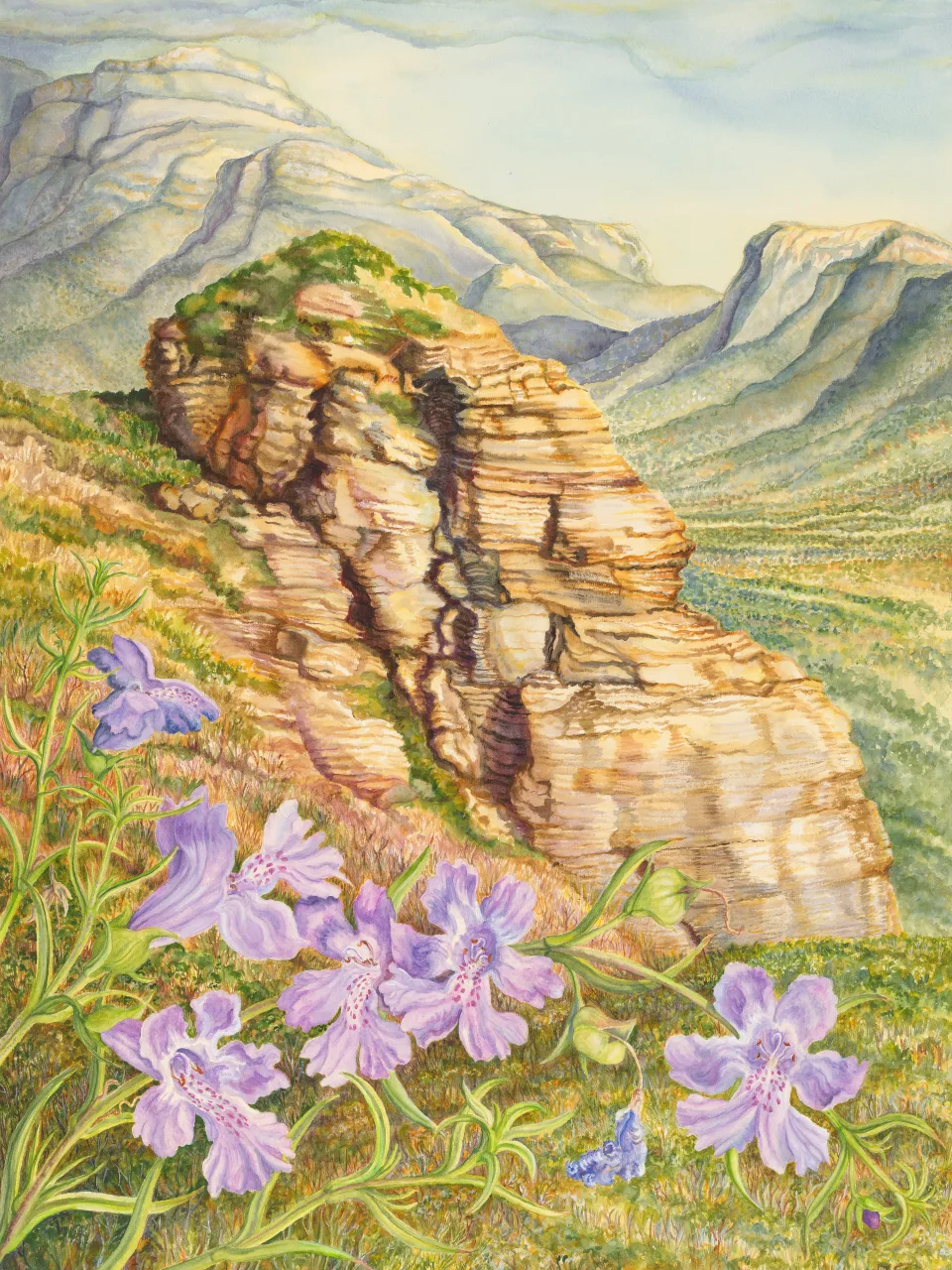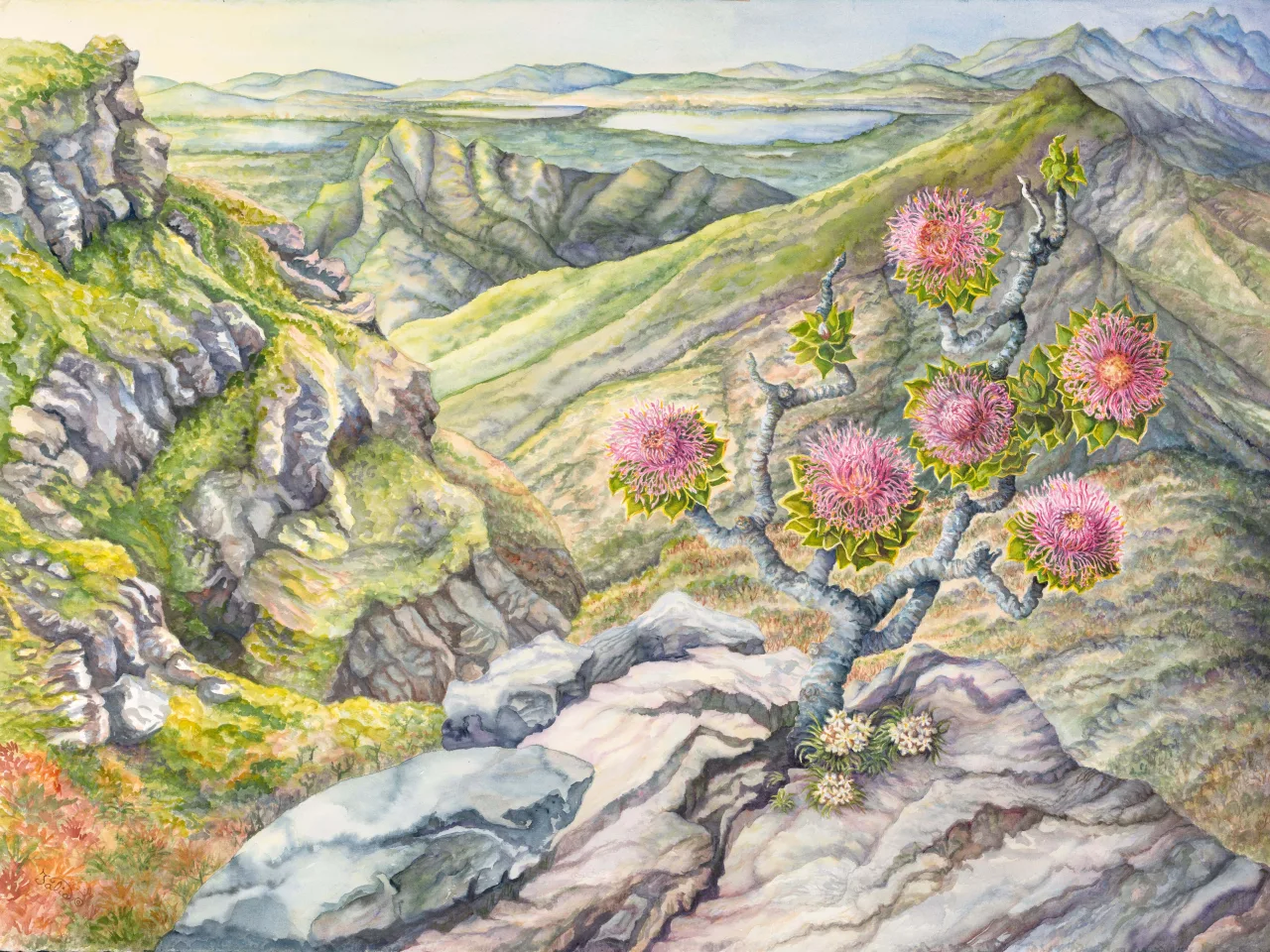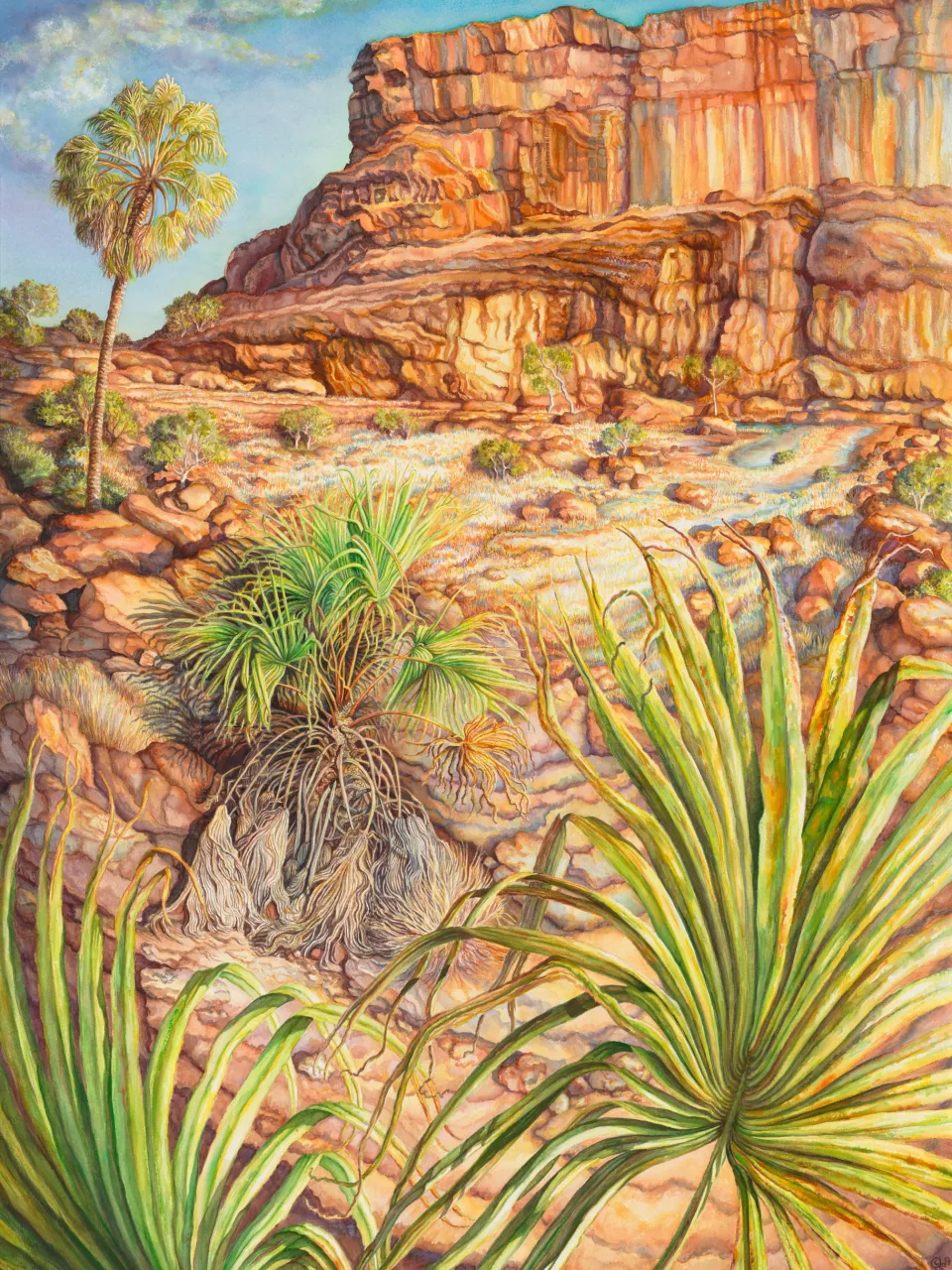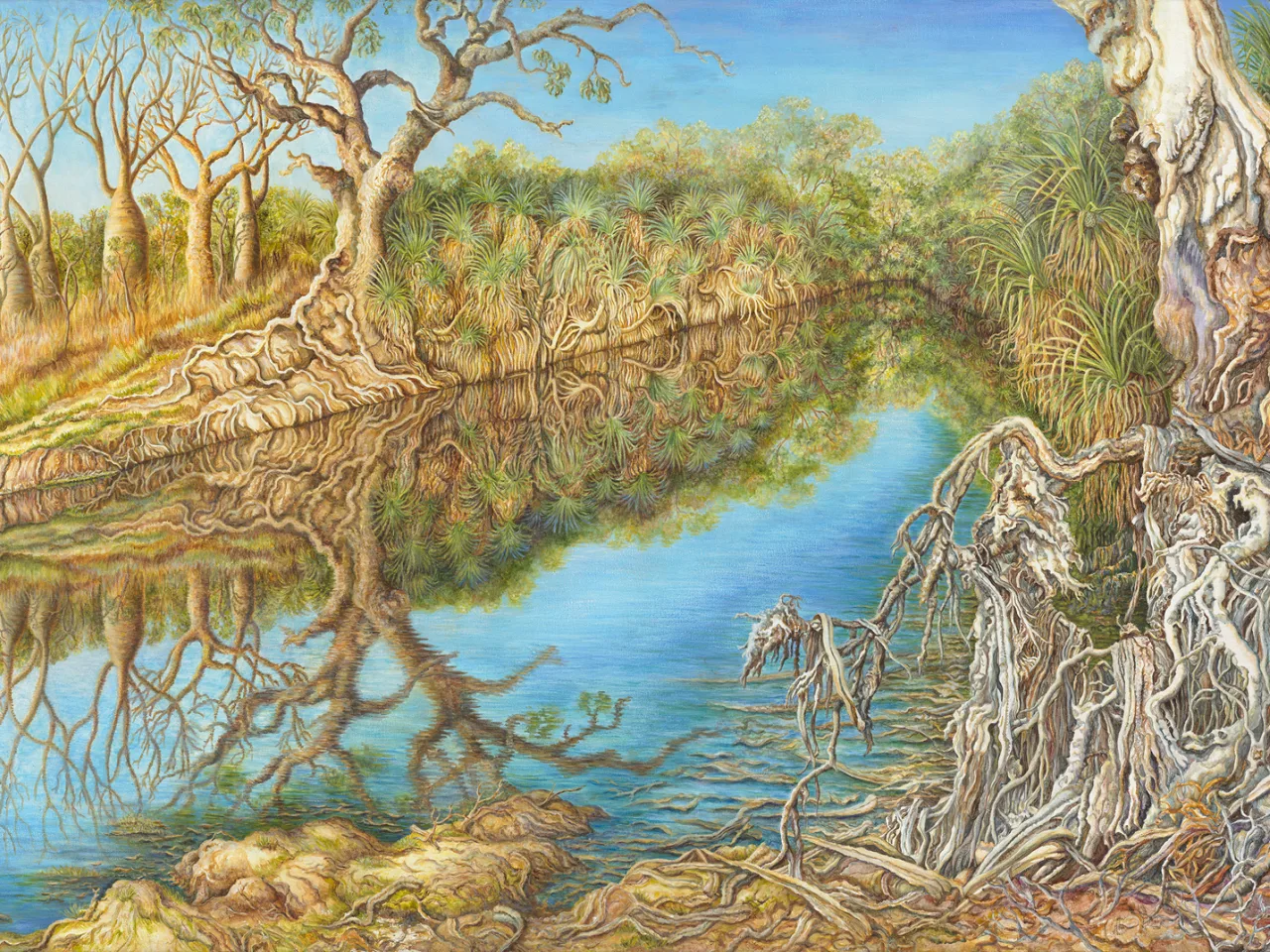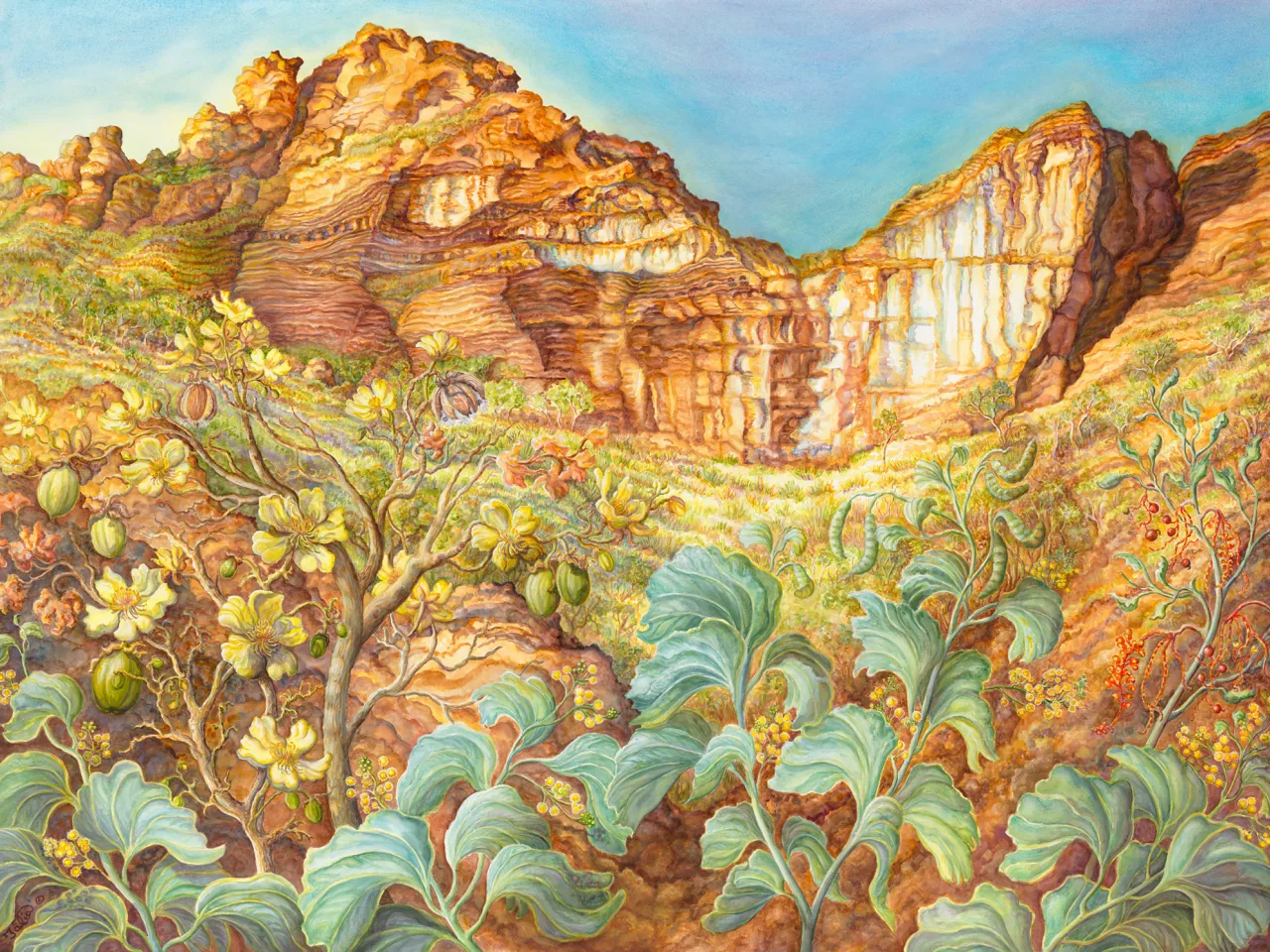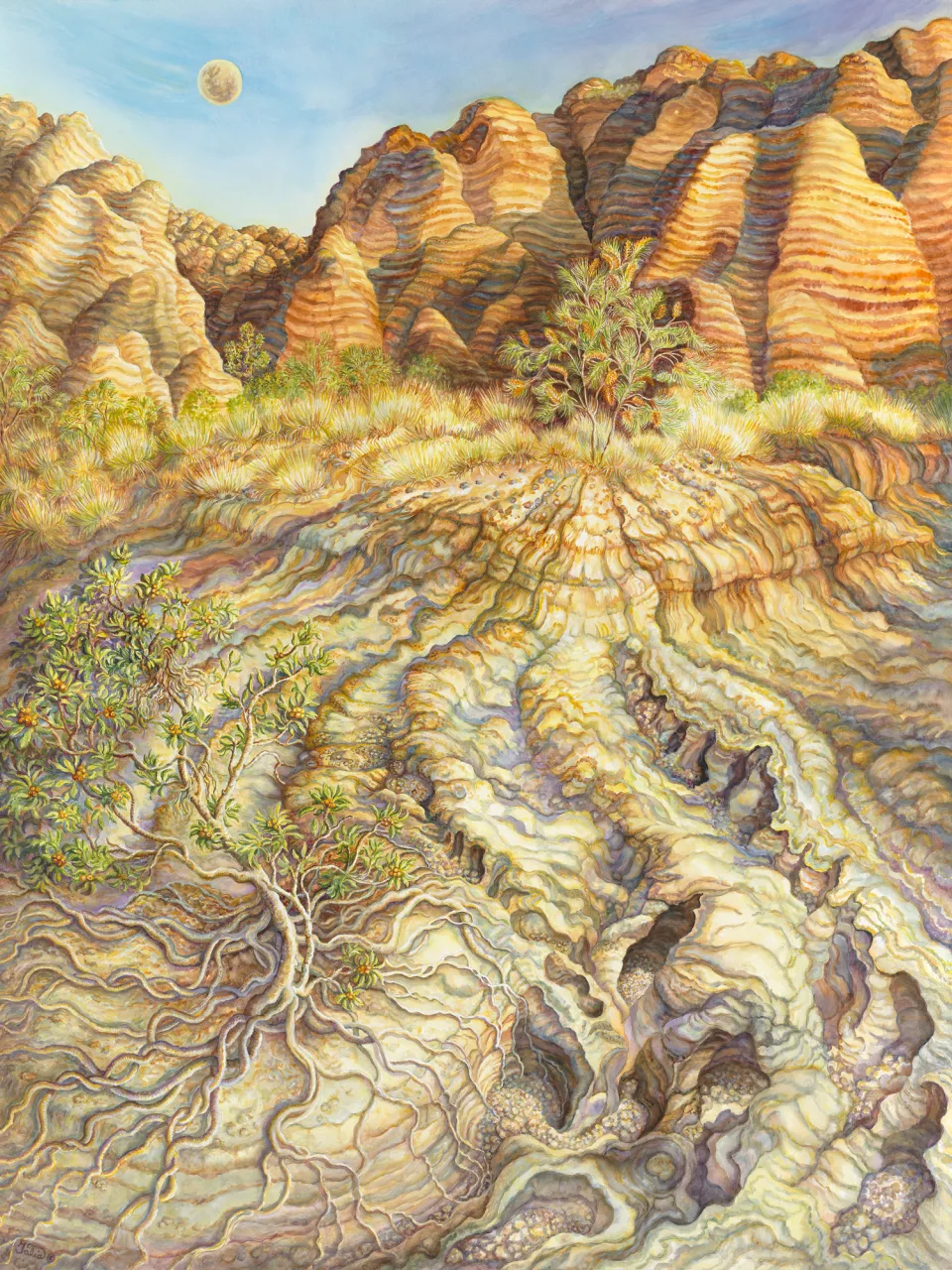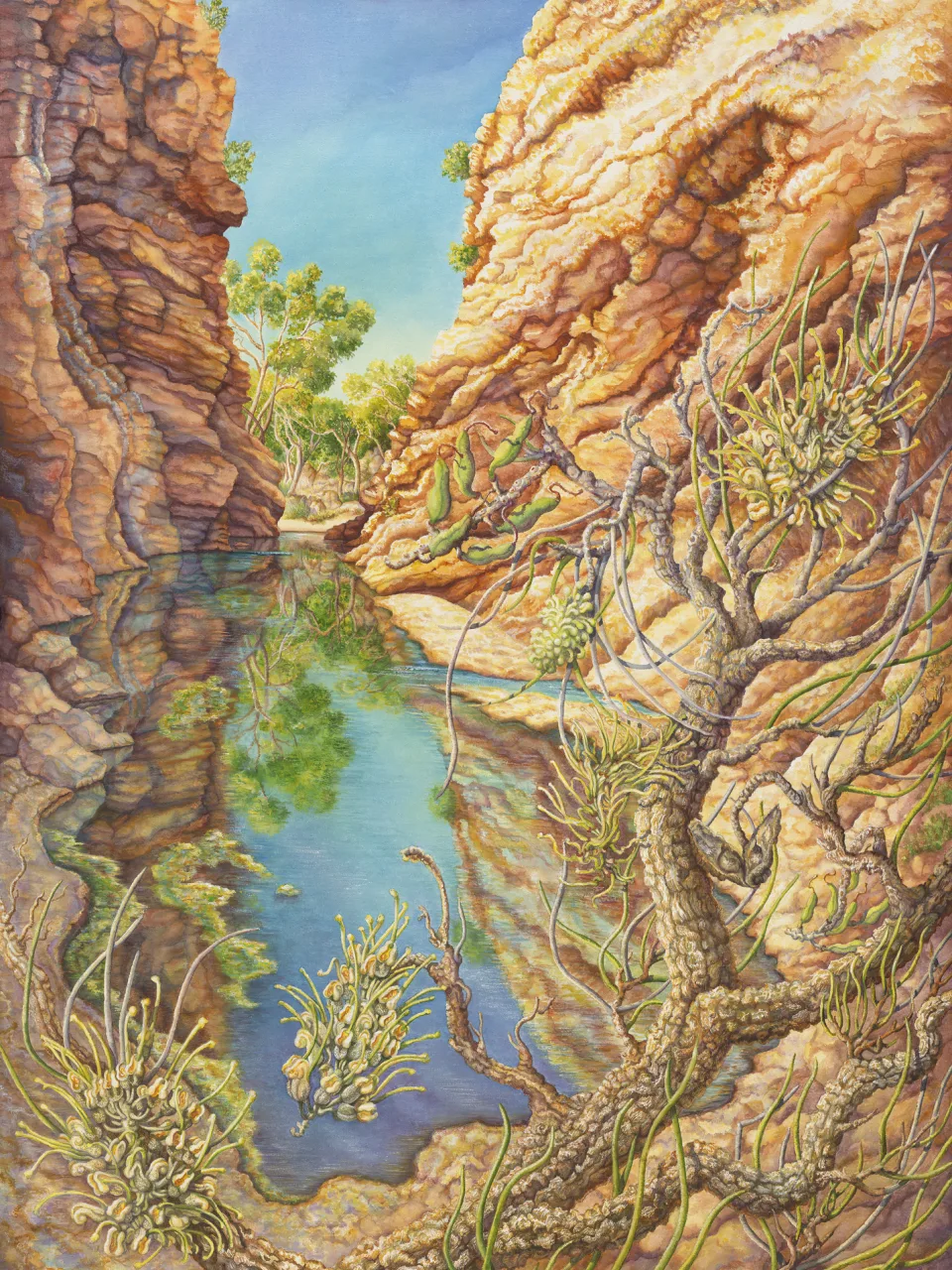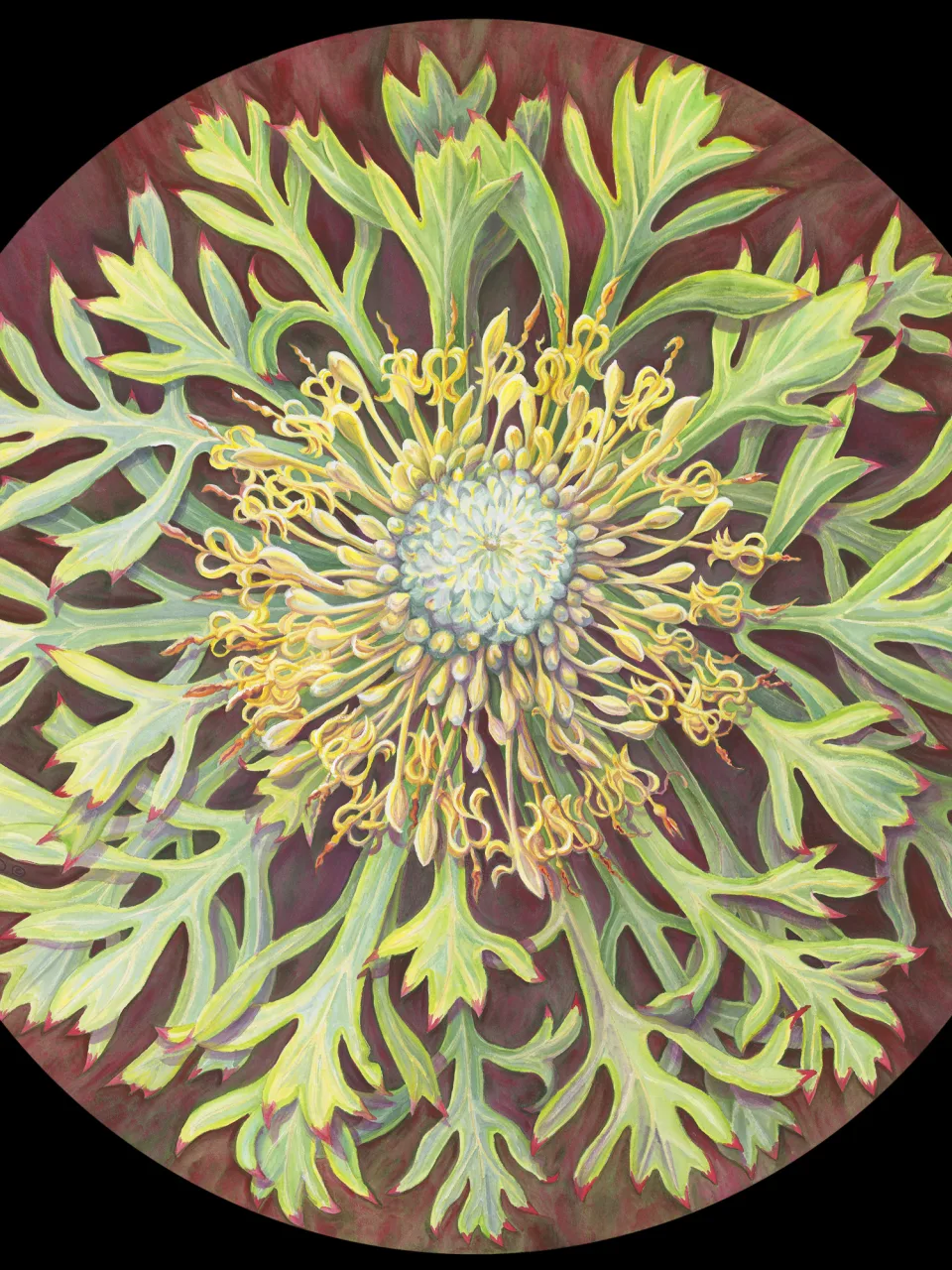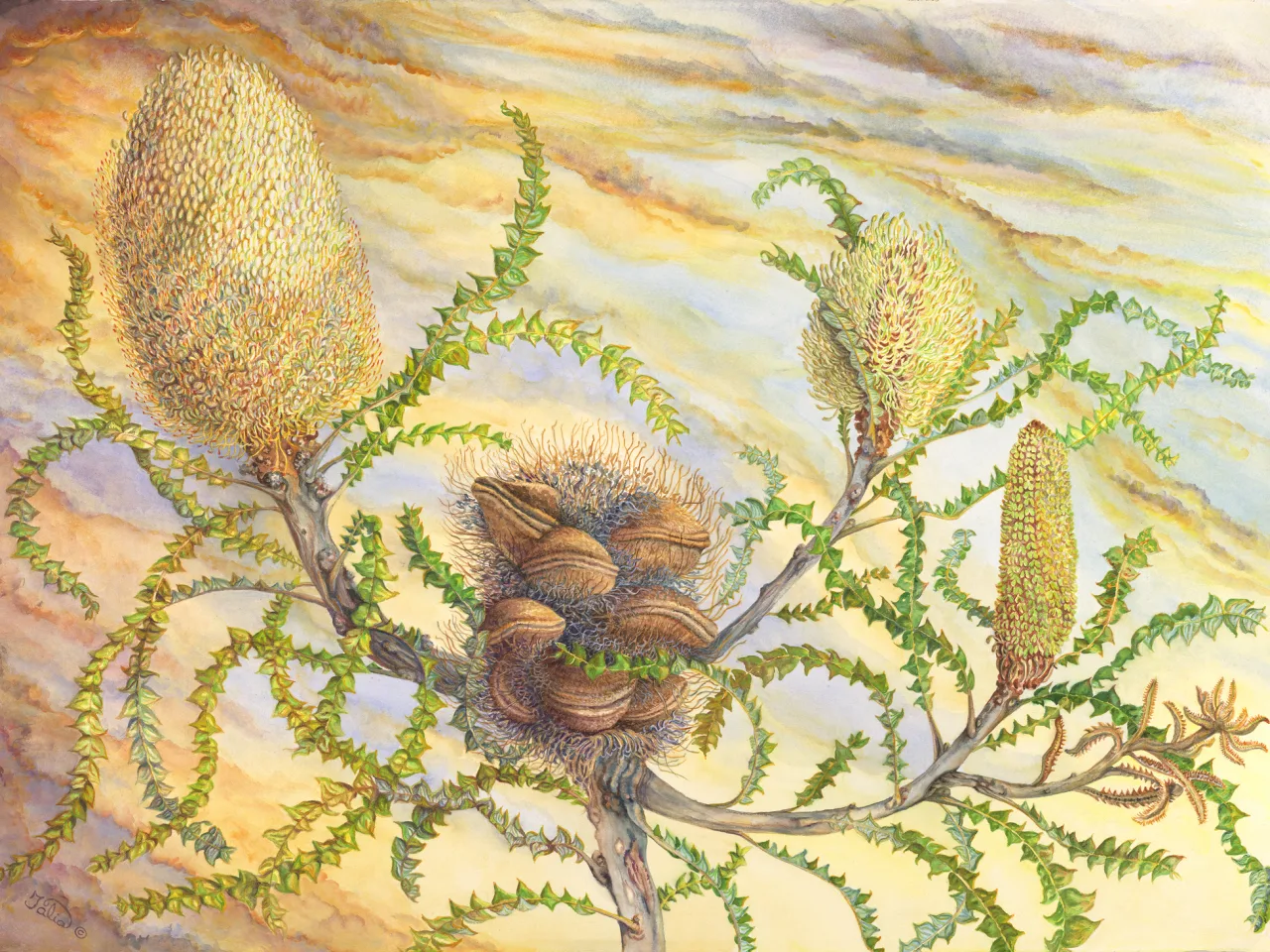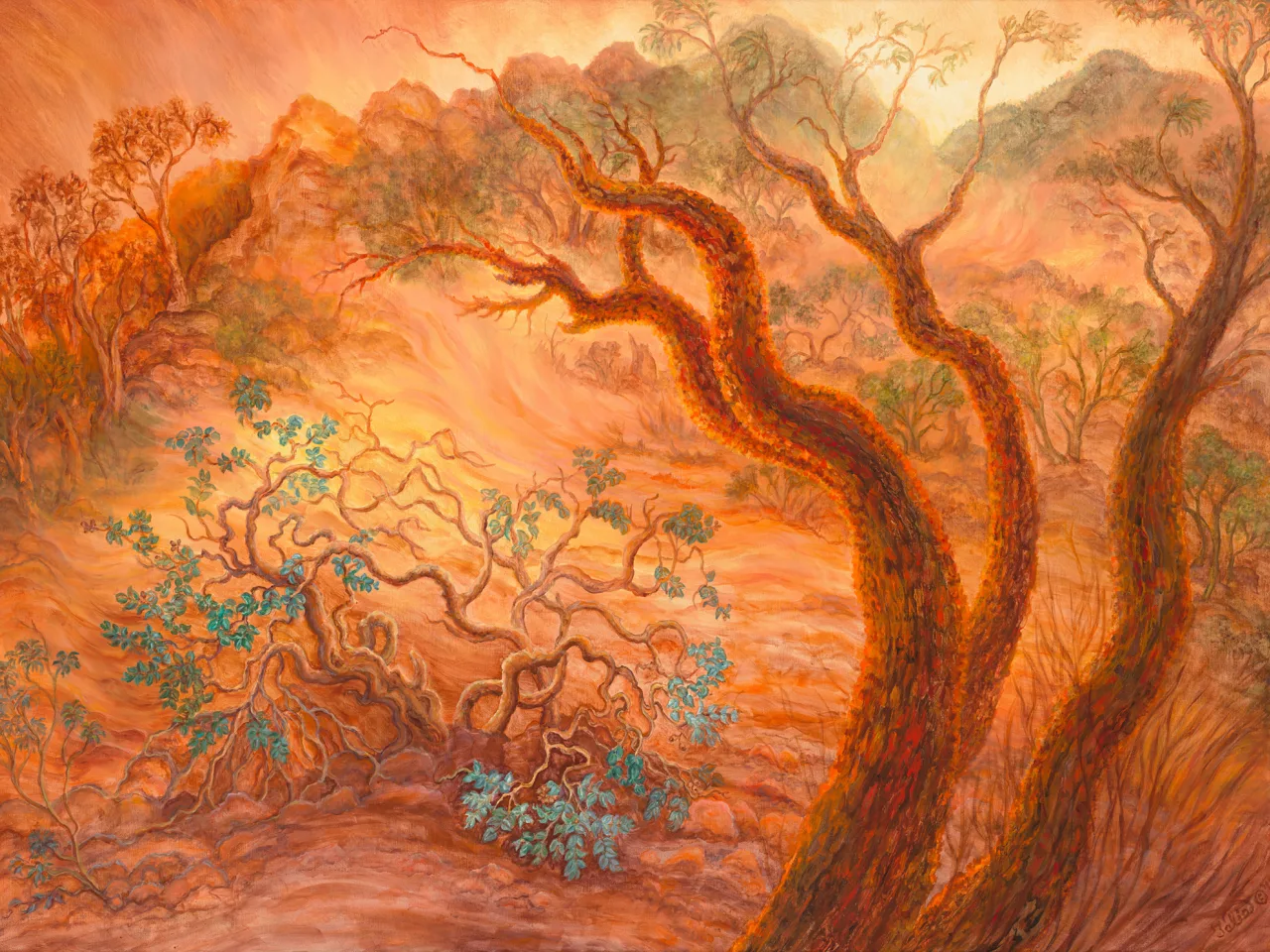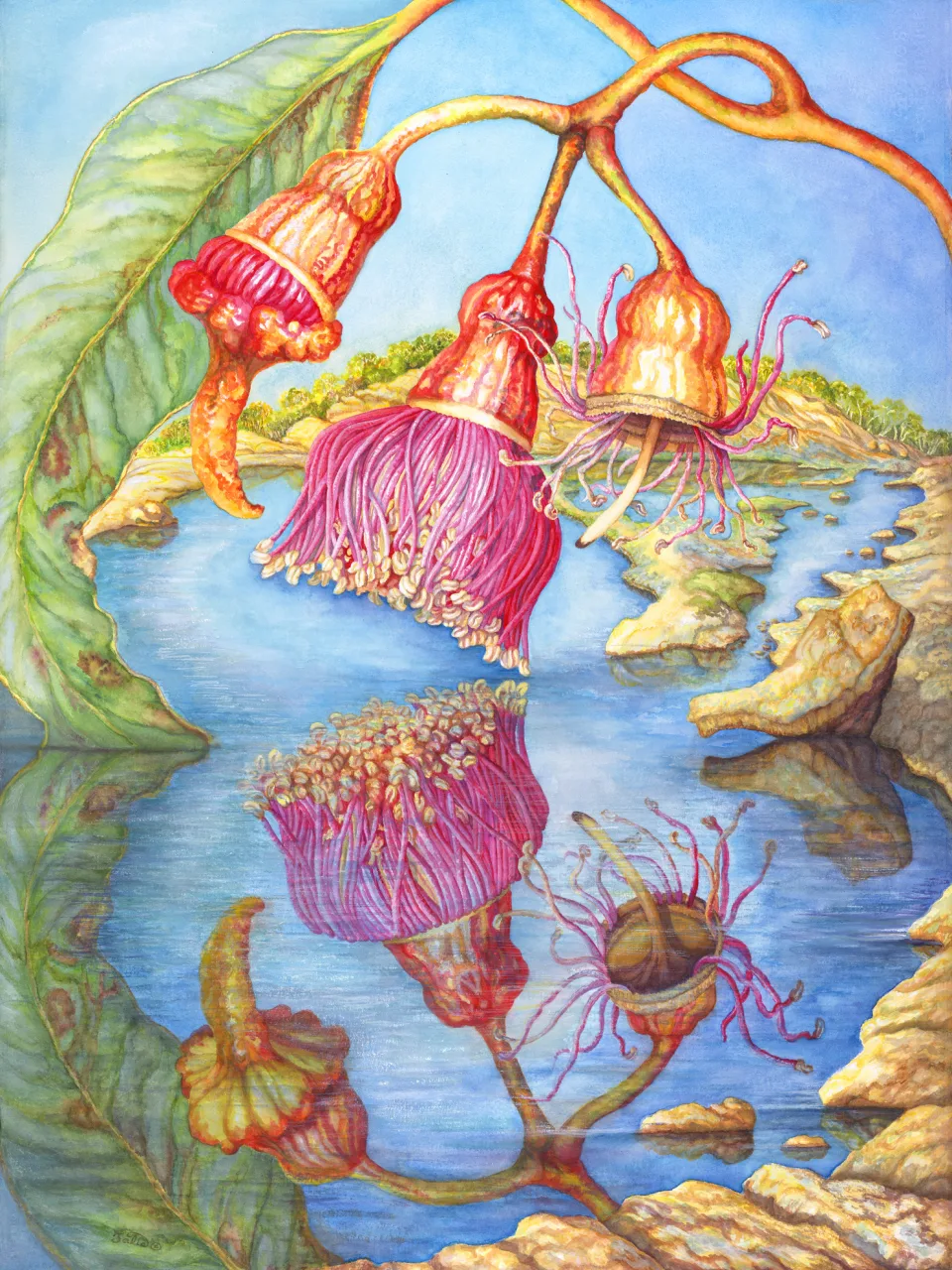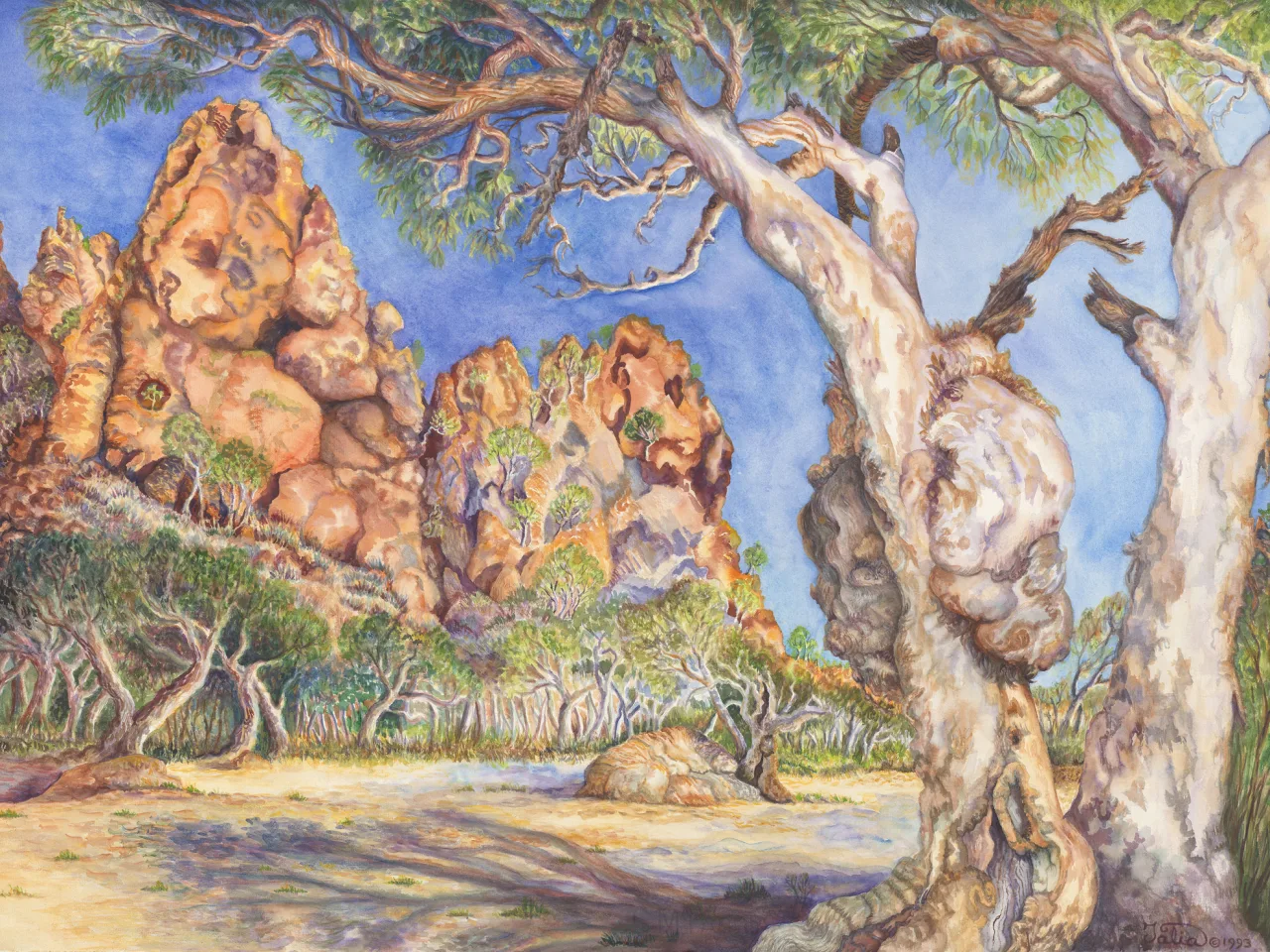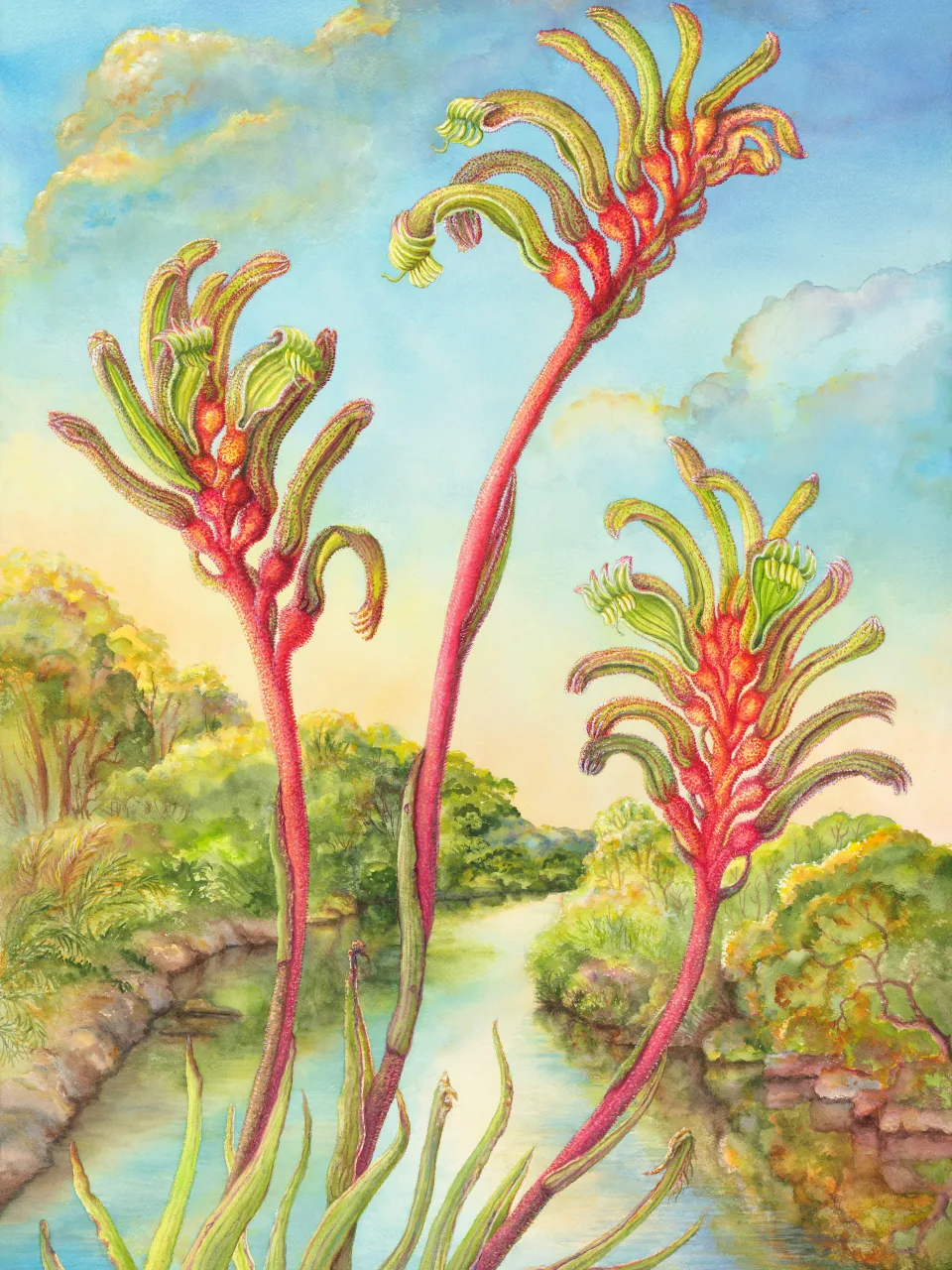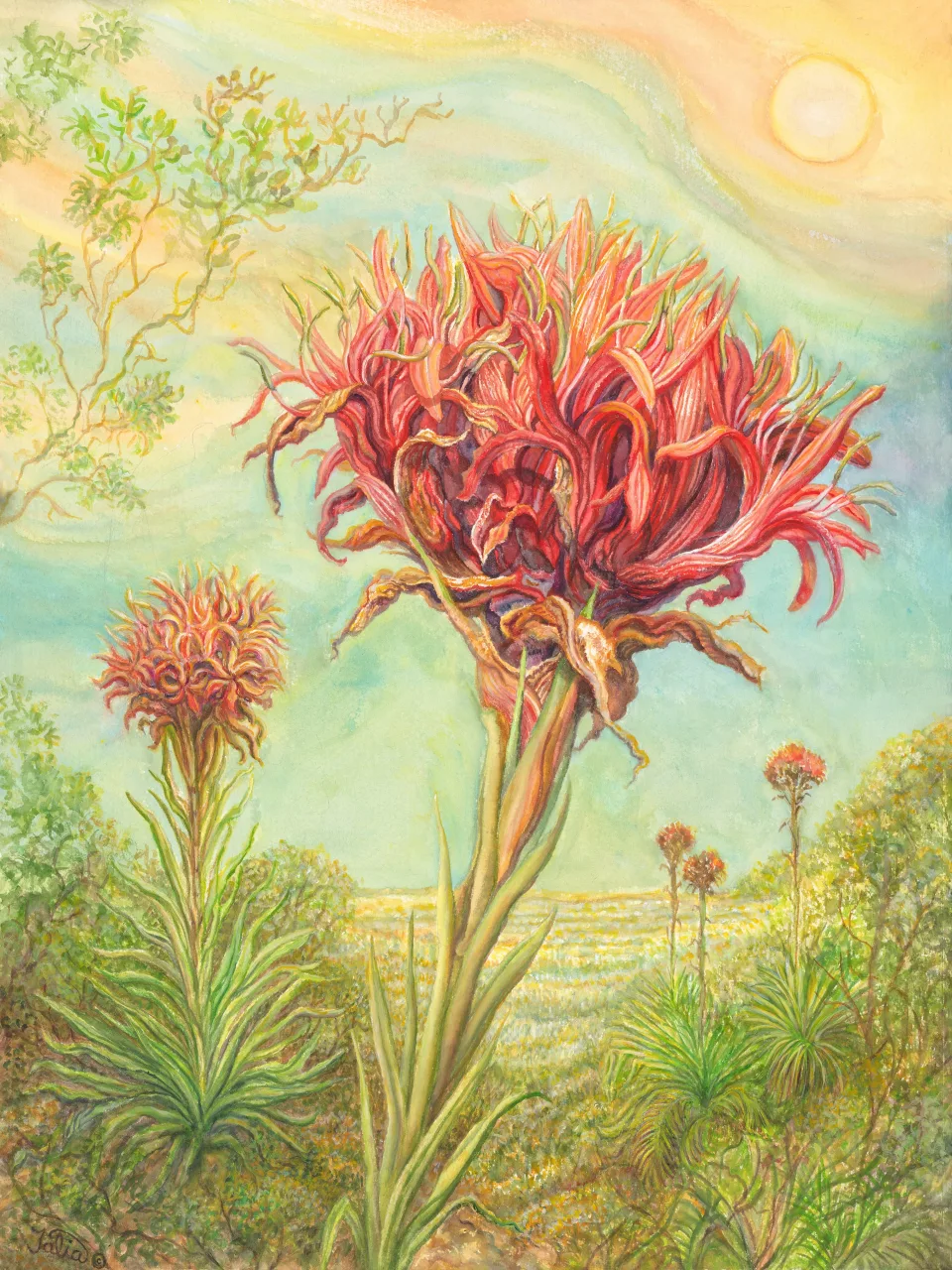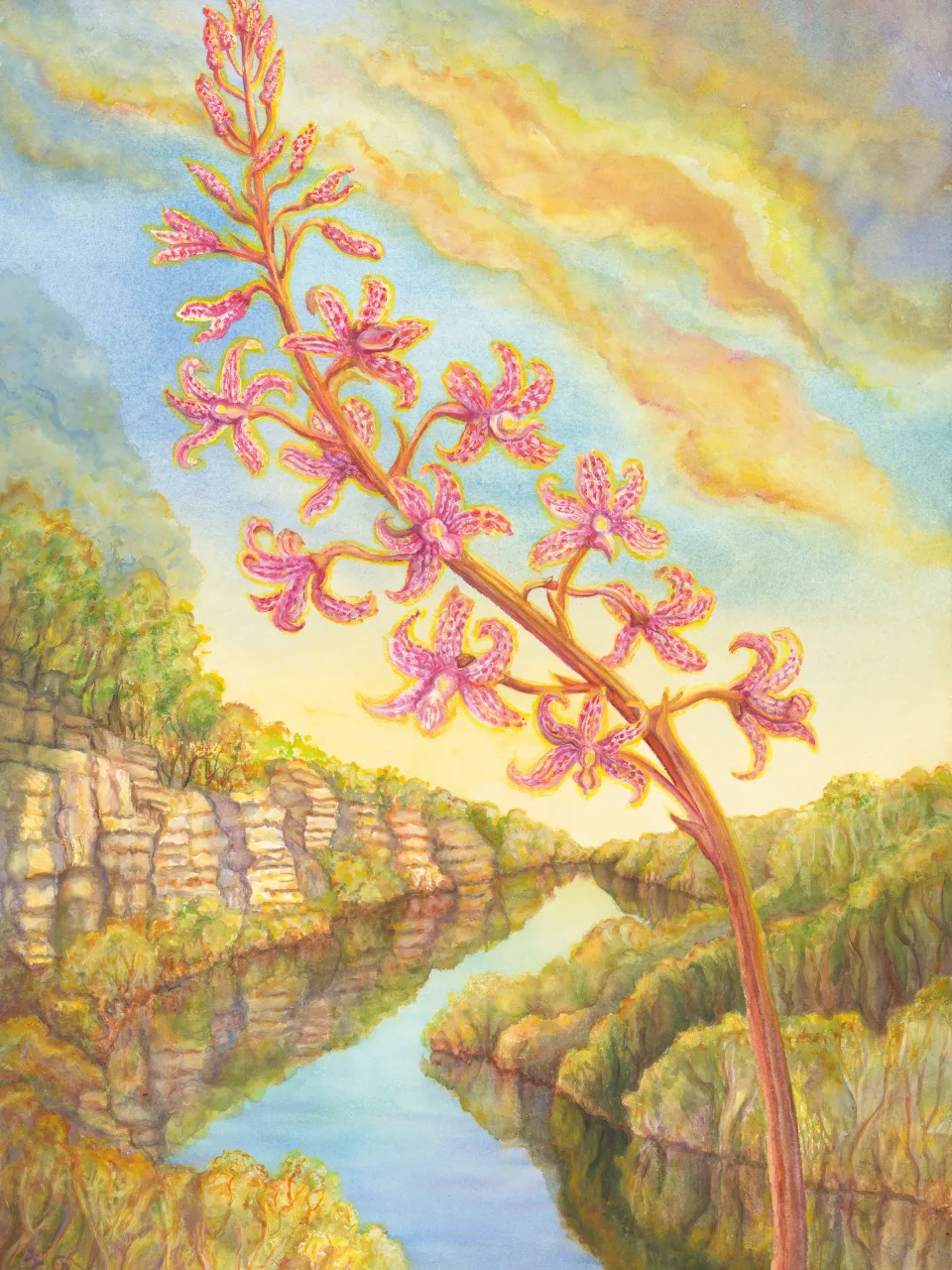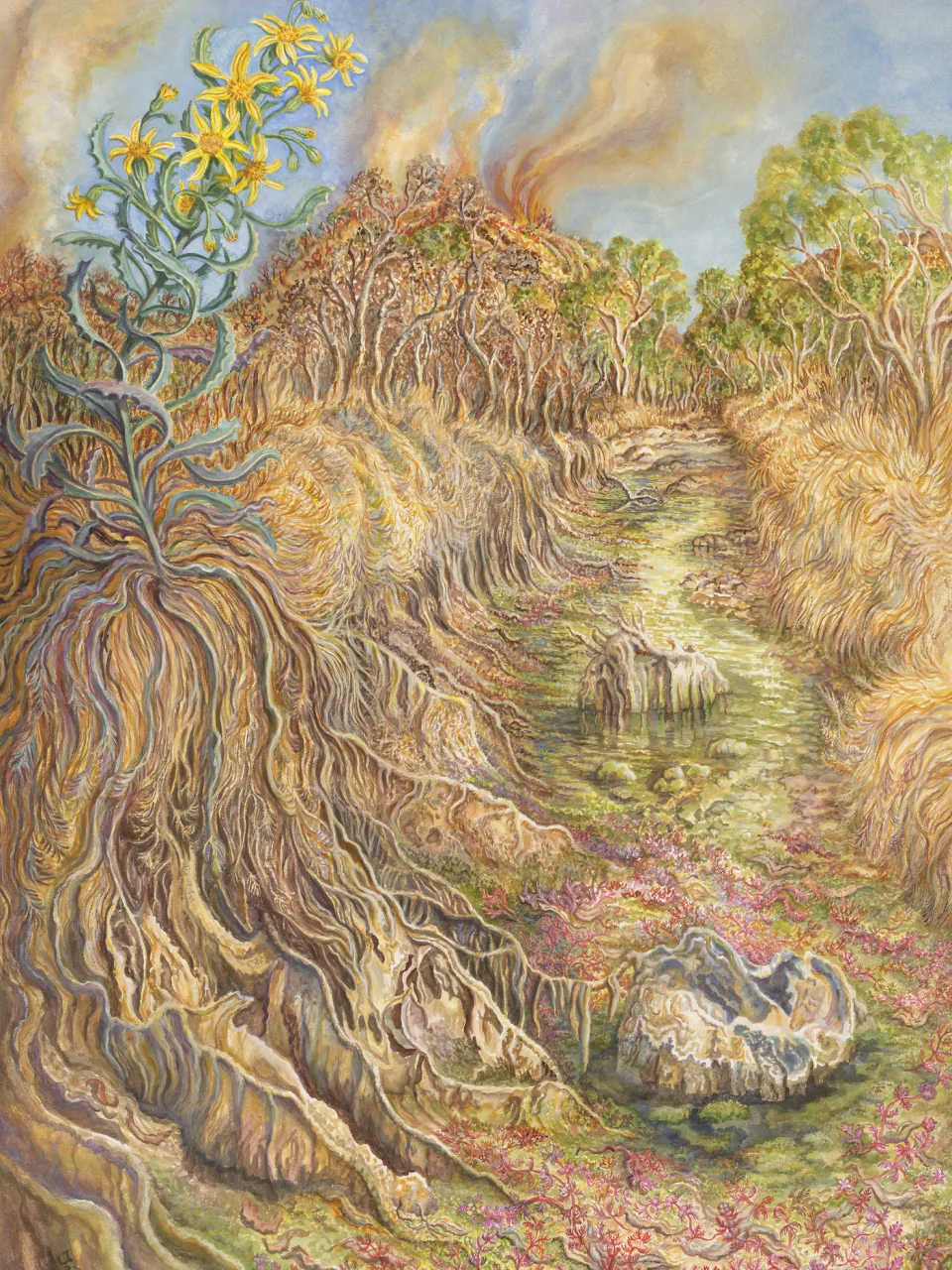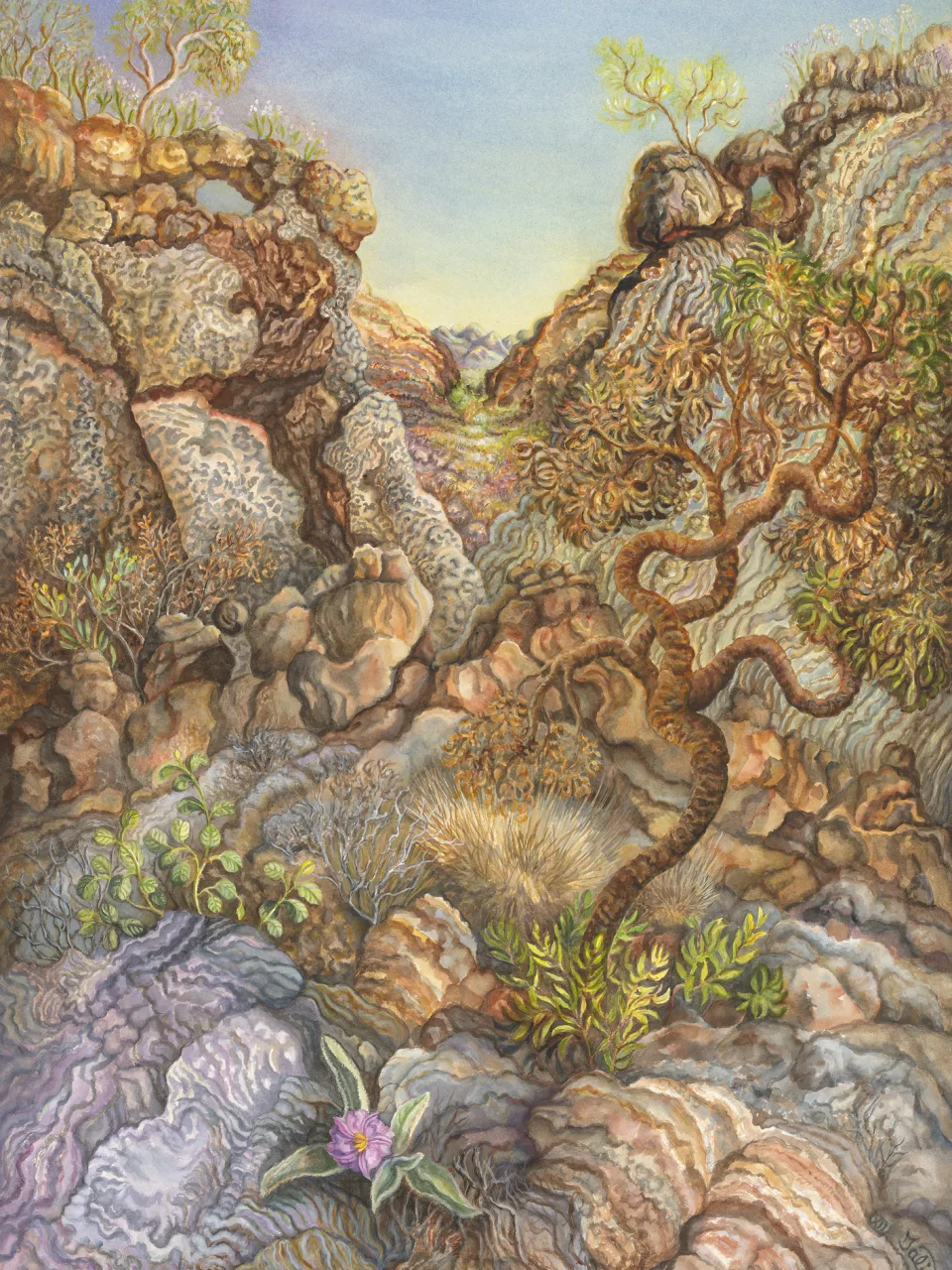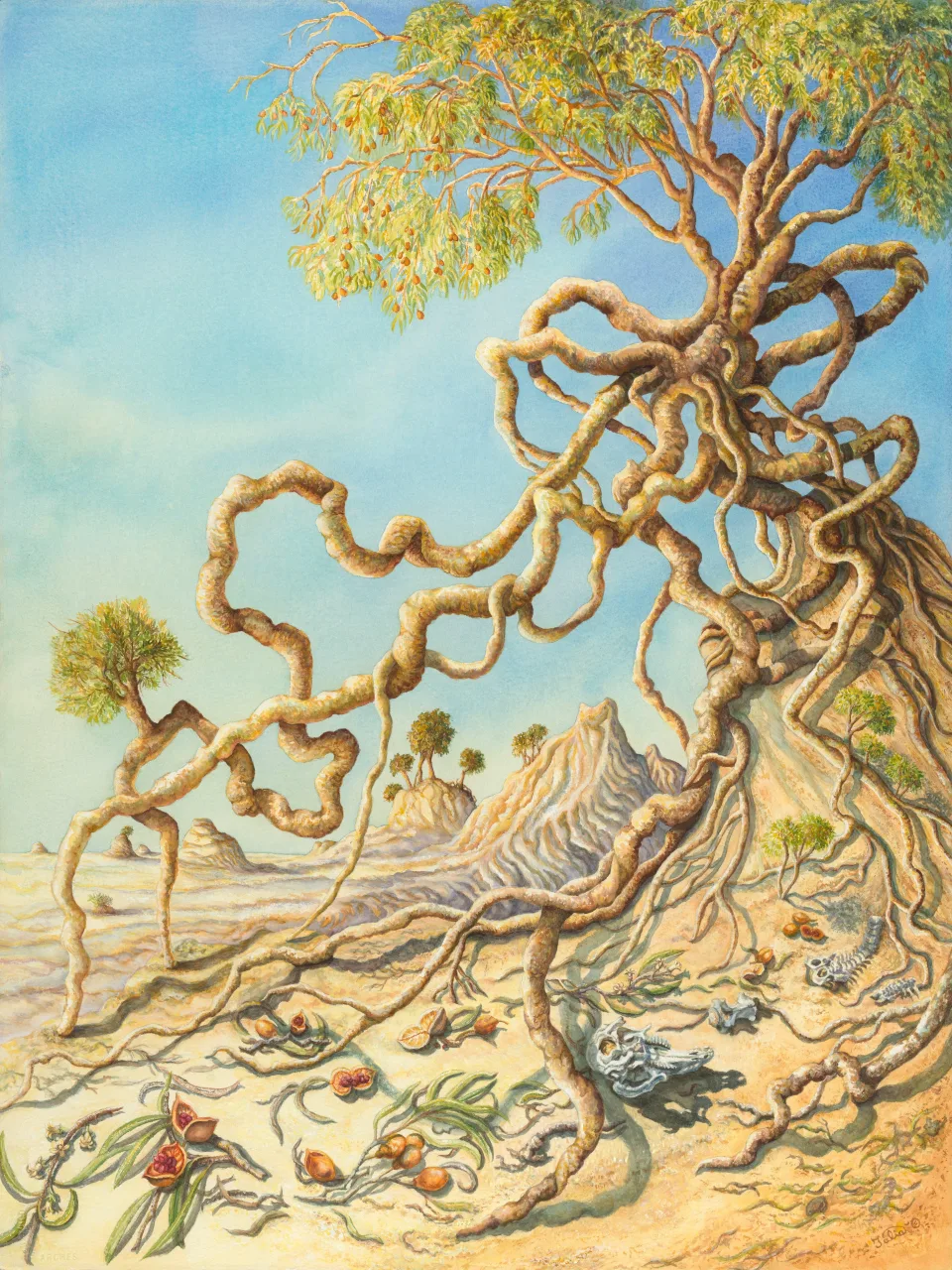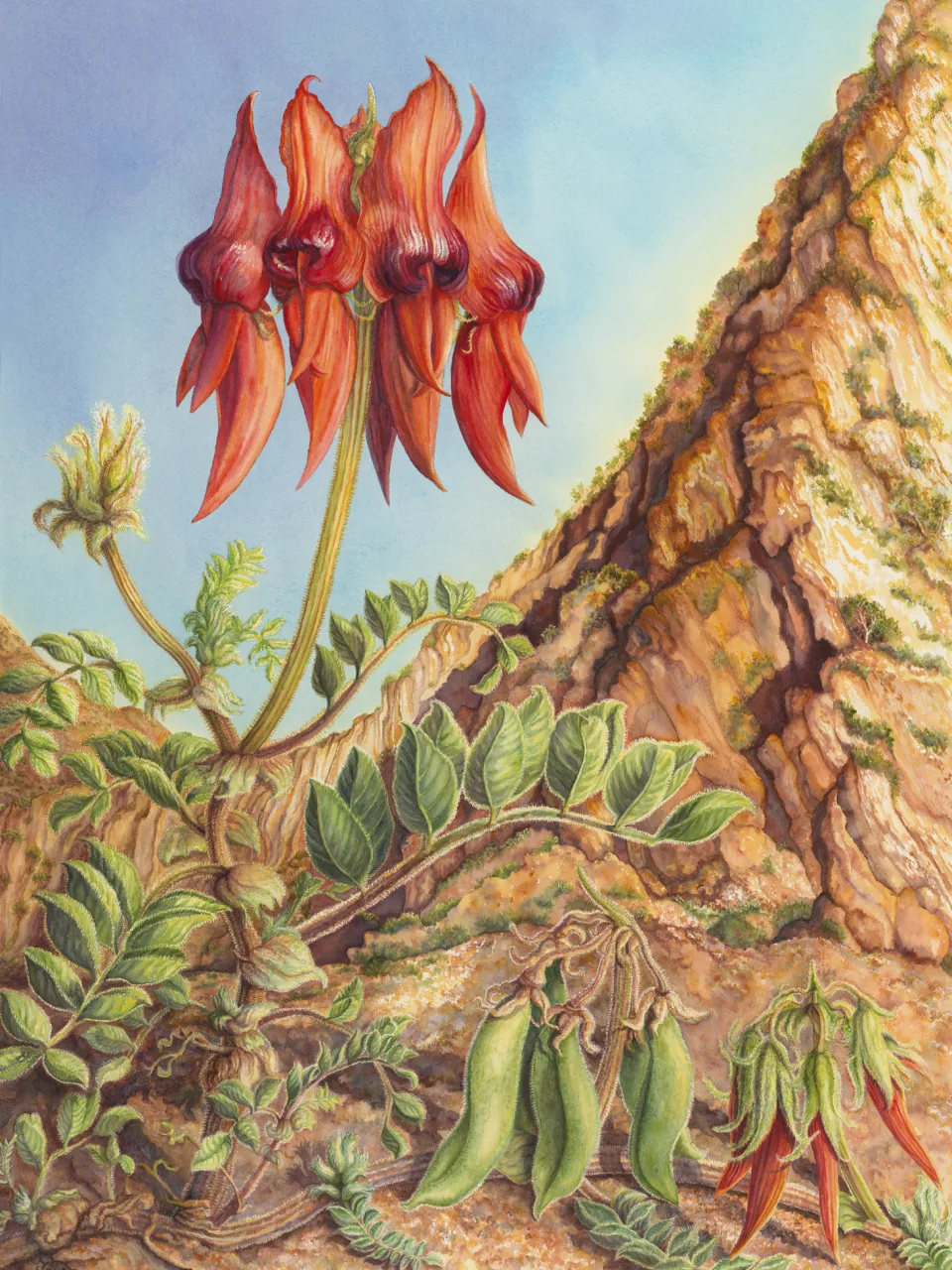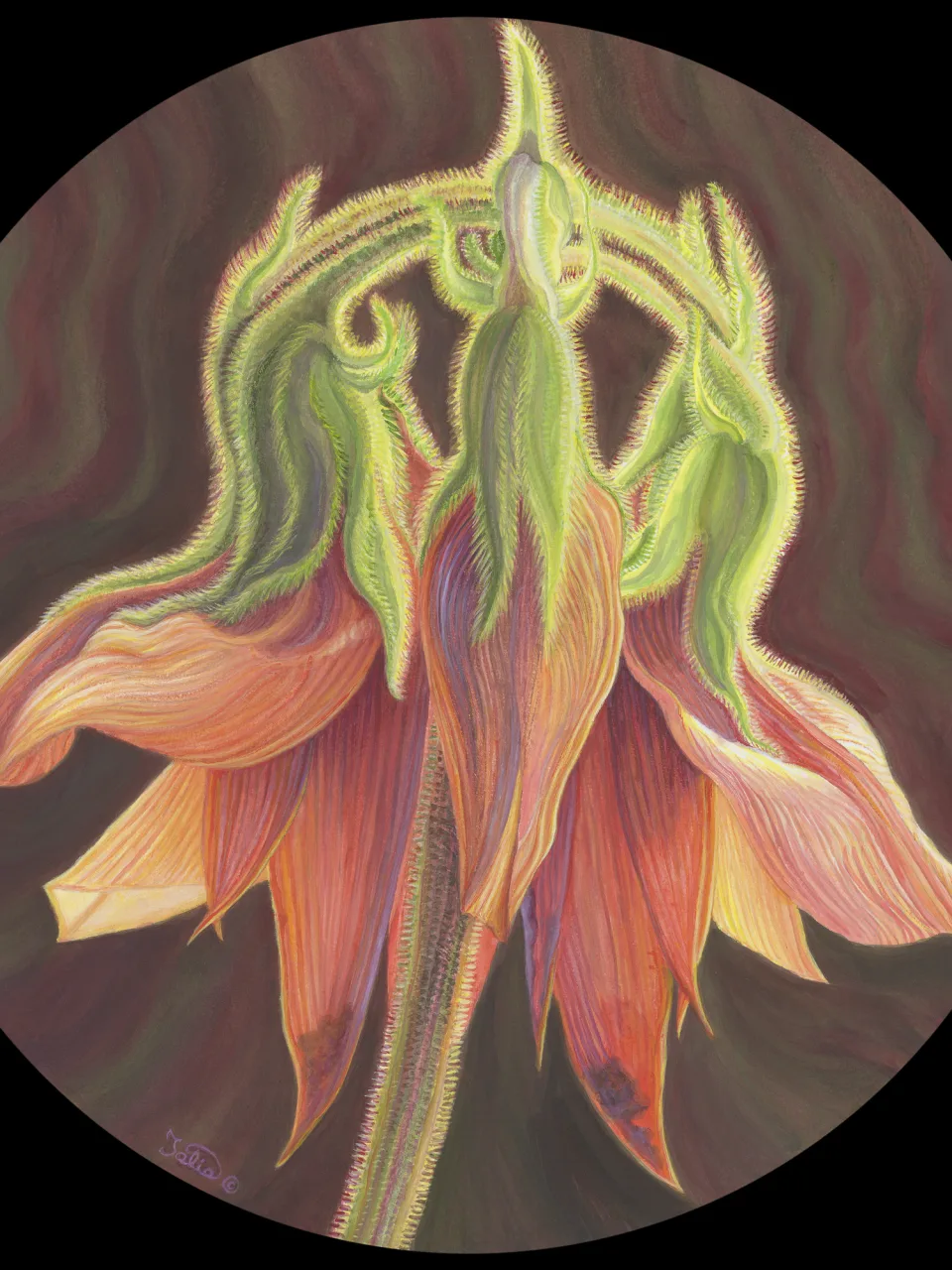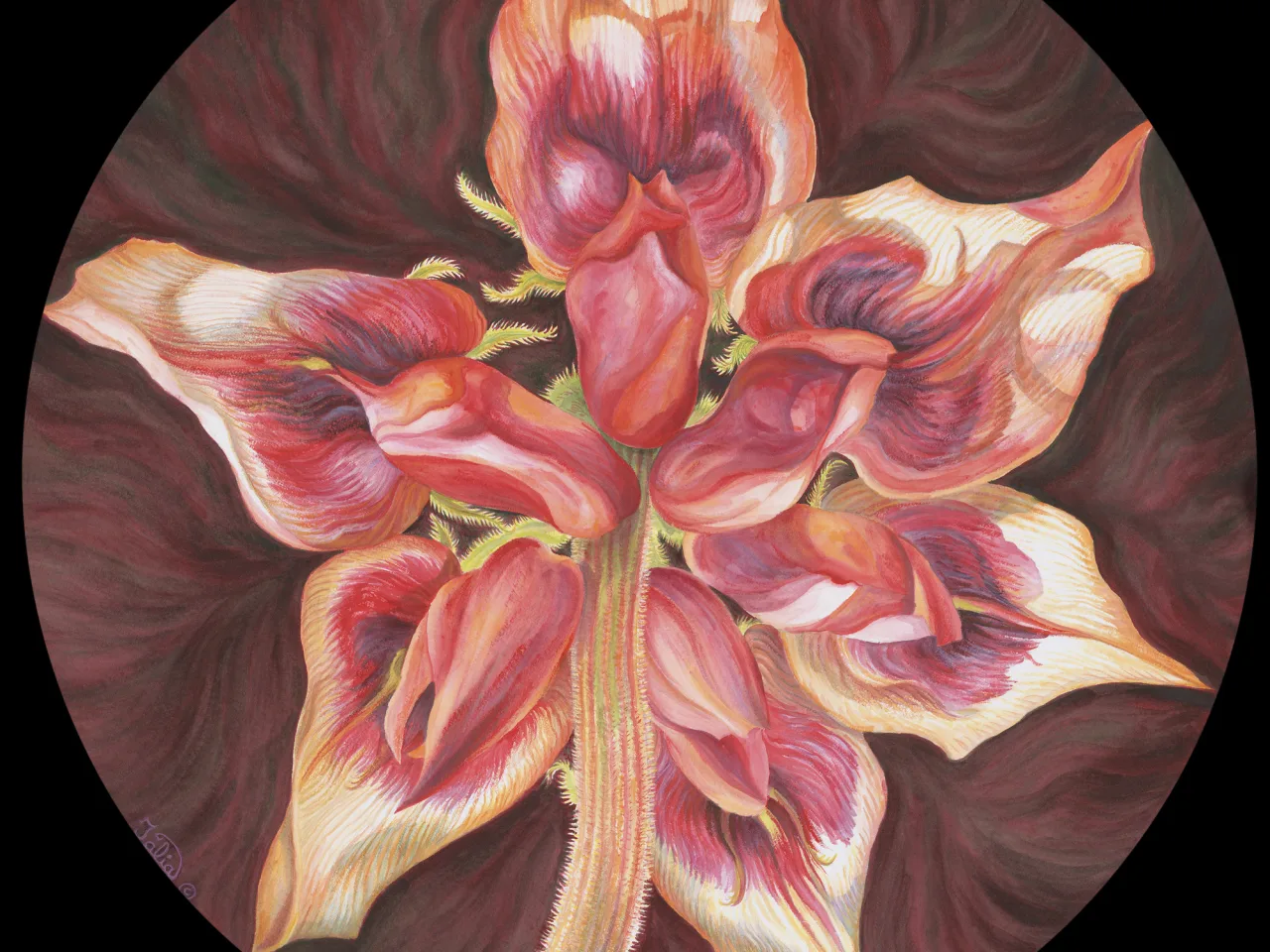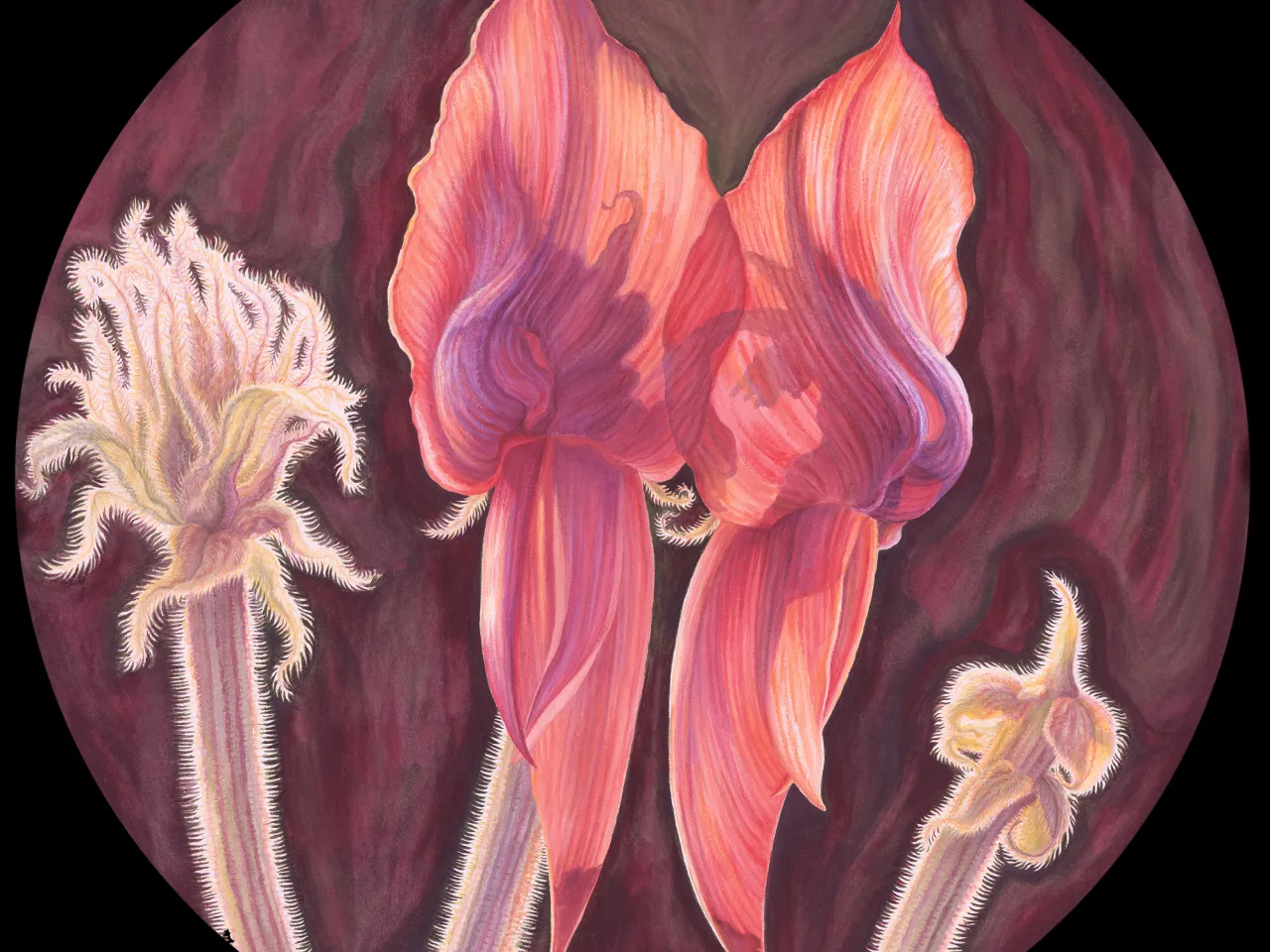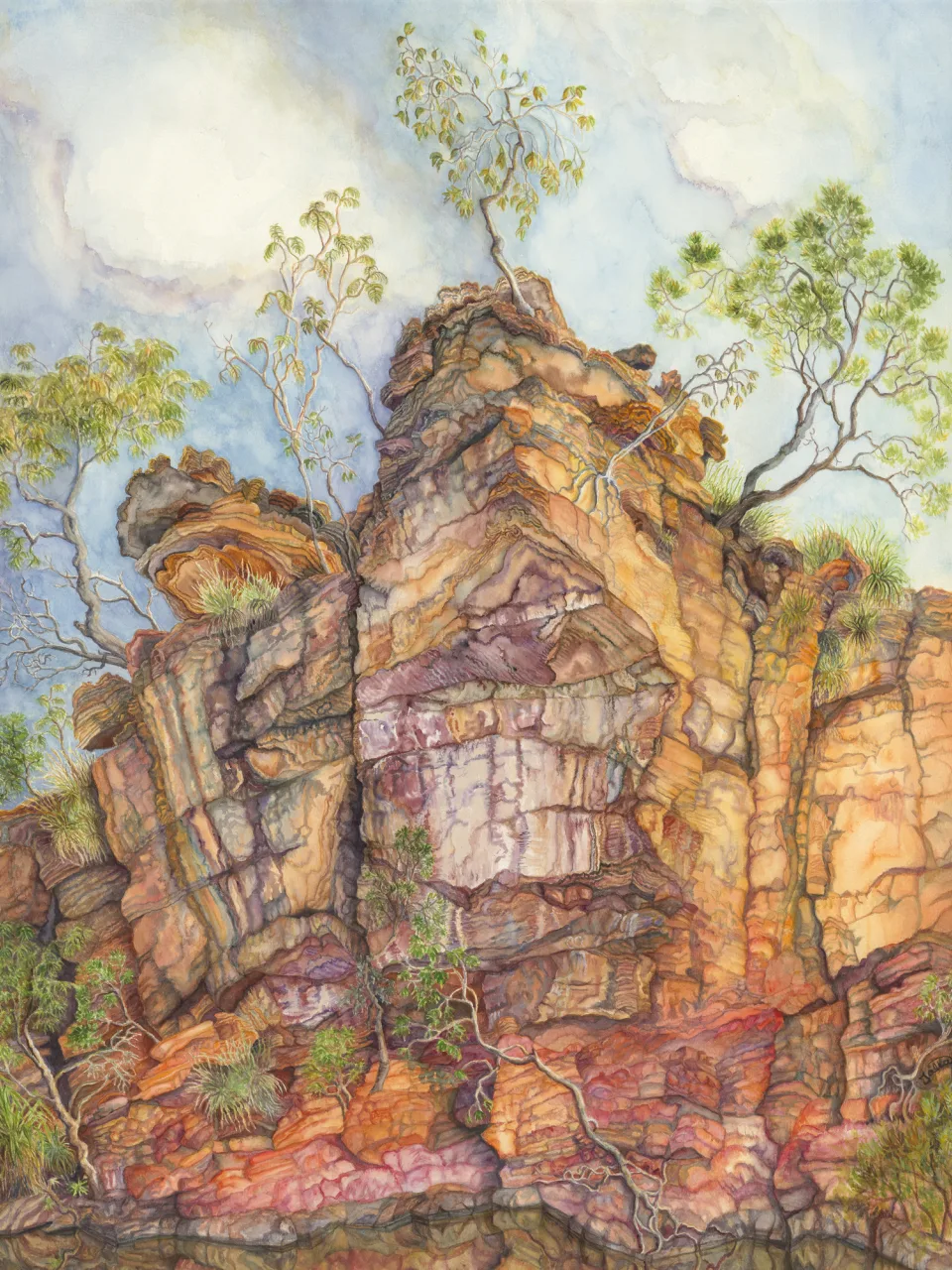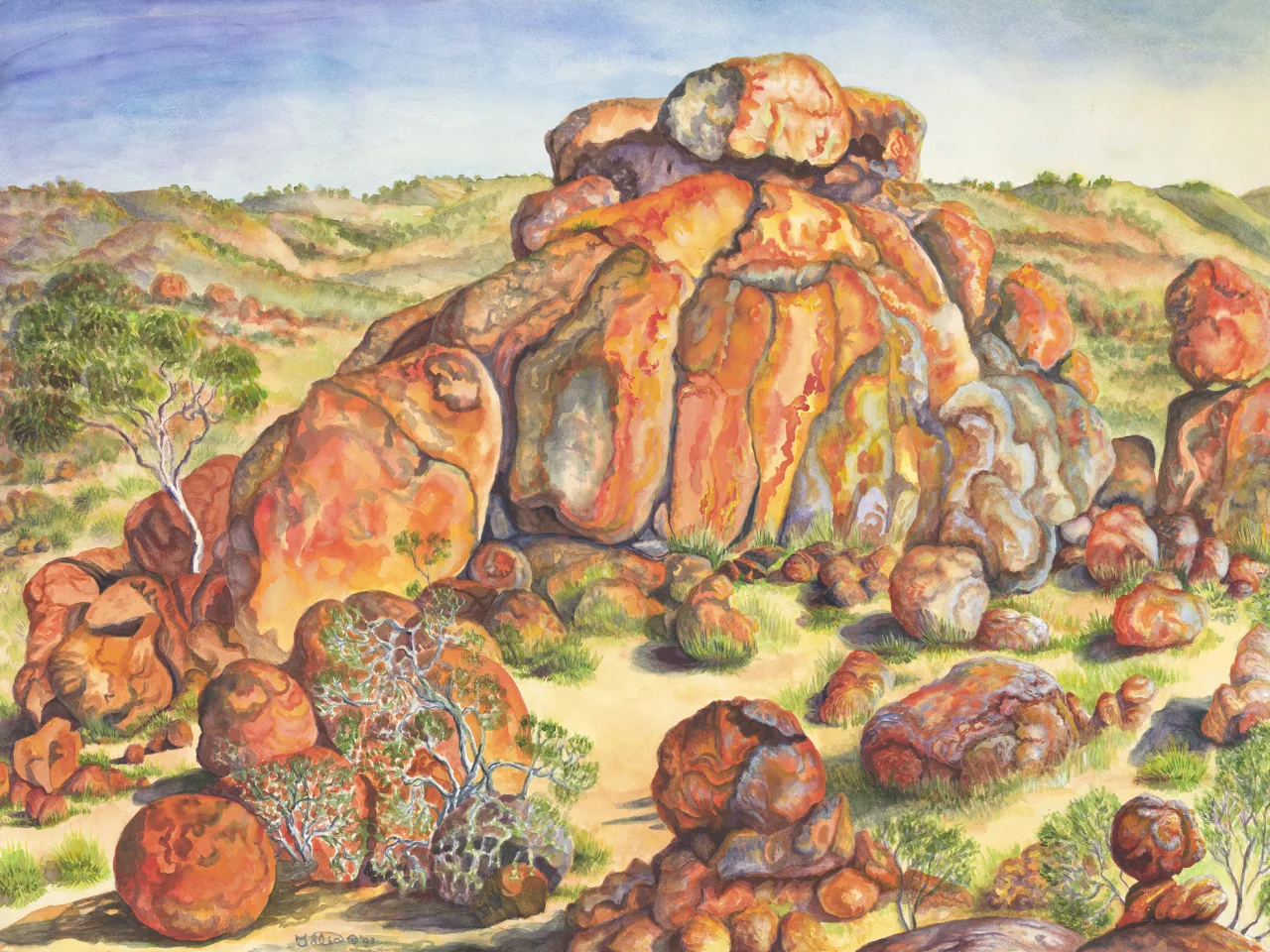Artwork 11 Ancient Partnerships—Male and Female Cycas armstrongii
Section 7
"Fire-Ferns" of the North—Ancient Cycads of Northern Australia
Litchfield National Park, Northern Territory, Northern Territory
- 1. Cycas armstrongii (fire-fern)
Artwork 11
Buy a print
Limited edition giclee archival quality print on 310 gsm Ilford cotton rag (from an original work in watermedia on watercolour board, 74 cm high x 55 cm wide)
from the artist
This work features Cycas armstrongii under the brilliant blue sky of a northern Australian summer.
Male plants produce large rust-coloured cones up to 20 cm in height by 12 cm wide, with many “sporophylls” (small modified leaves with sharp points) that make up the body of the cone and produce pollen (“microspores”). The separate female plants produce a circlet of perhaps 50 ovules, with spherical orange-brown seeds about 4 cm in diameter growing four to a sporophyll. In the case of the female plant, the sporophylls are long modified leaves about 20 cm long with a triangular apex.
While Cycas armstrongii plants may grow to 4 m tall with a slender girth 15 cm across, I discovered male plants were often shorter than the females, and wondered how well wind-pollination would work. I learnt that pollination actually occurs with insect assistance, and from some of the most primitive beetles alive today. Both beetles and cycads proliferated after the world’s greatest biosphere disaster, the end-Permian extinction event 260–250 mya, when over 90% of the world’s species (including most insects) became extinct. Beetles appeared for the first time in the fossil record after this event, and insect-plant symbiotic relationships seemed to have commenced in that era (Cockell, 2003). Cycads in both Africa and Australia have links to this ancient beetle family, which so far have been traced back to at least 100 million years ago, when Australia and Africa were still joined (Jones, 1993/2000).
Further evidence supporting the primitive nature of cycads was provided by the discovery that cycads produce sperm cells that are motile (capable of independent locomotion). This unique feature is found in one other gymnosperm, Ginkgo biloba, which has a long fossil history matching that of the cycads. It is regarded as a “living fossil”, as species now only exist in one small area in China, and in cultivation (Kenrick & Davis, 2004). There are beautiful Ginkgo trees growing in the Adelaide Botanic Gardens. In ginkgoes and cycads, when pollen grains are deposited near the ovules during pollination, pollen tubes grow toward the ovules over a few months then burst to release the sperm cells when near their destination. The sperm cells possess hair-like cilia which enable them to swim towards the ovule. This primitive form of fertilization links the cycads and the ginkgophytes to the ferns and fern allies, which also have motile sperm cells (Jones, 1993/2000).
